Hello fellow travelers!
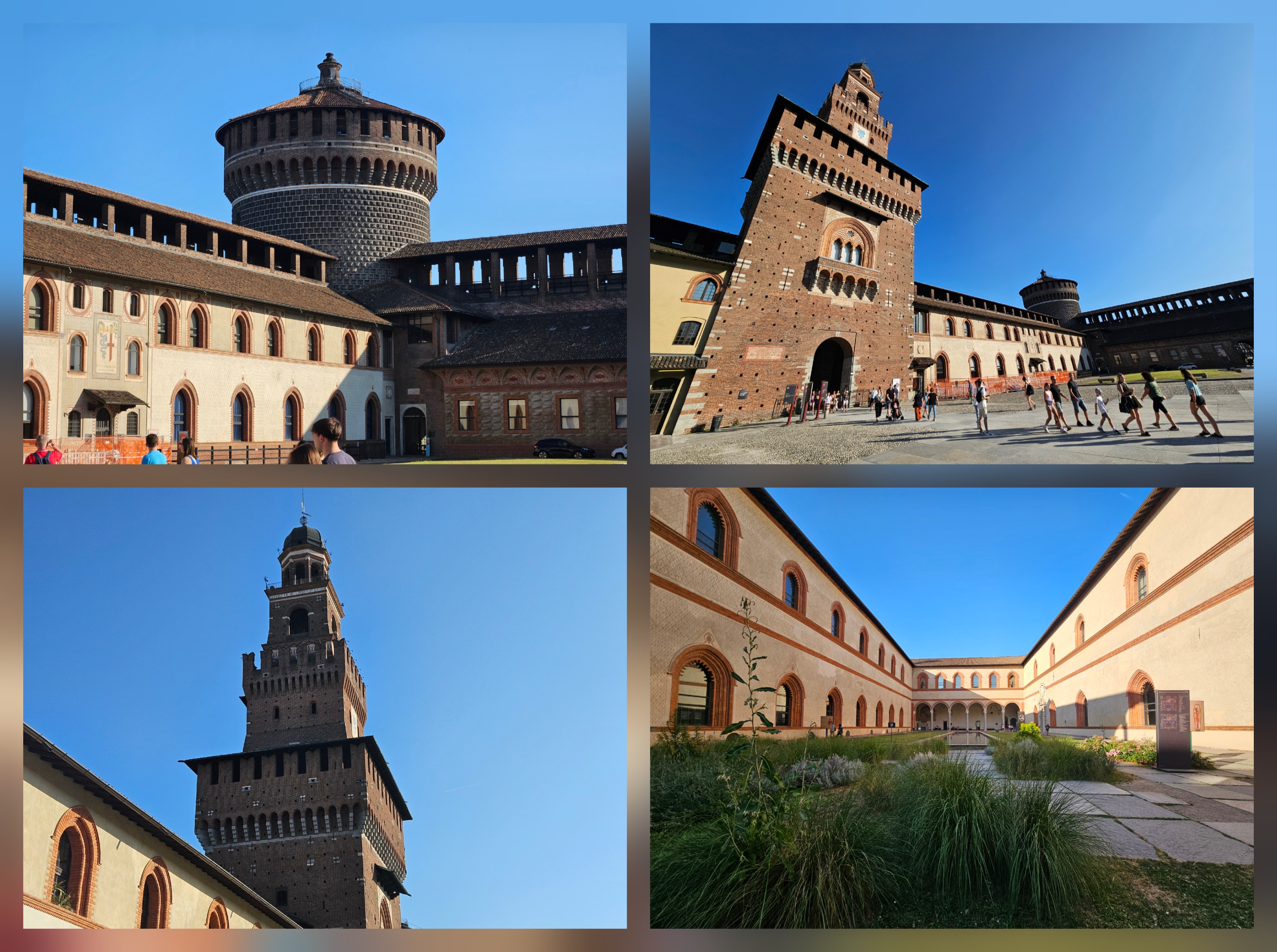
Milan is a city known for its dynamism, innovation and culture, but behind its modern facade hides a rich history that is reflected in its magnificent monuments. One of the most prominent historical jewels in the center of the city is the Sforza fortress, a monumental complex that testifies to power, art and military strategy throughout the centuries. But within those massive walls, there is one place that has a special meaning. Rocchetta is the inner fortification of the fortress, which throughout history served as the last line of defence and as a place where rulers sought safety in the most critical moments.
From the medieval days of the Visconti family to the Renaissance rebuilt complexes under the Sforza family, this fortress carries stories of power struggles, strategic military innovations and cultural upheavals. Today, Rocchetta is not only a witness to the military past, but also a cultural center, home to numerous museums and art collections that preserve the history of Milan, but also of the whole of Italy.
#
Sforza Castle
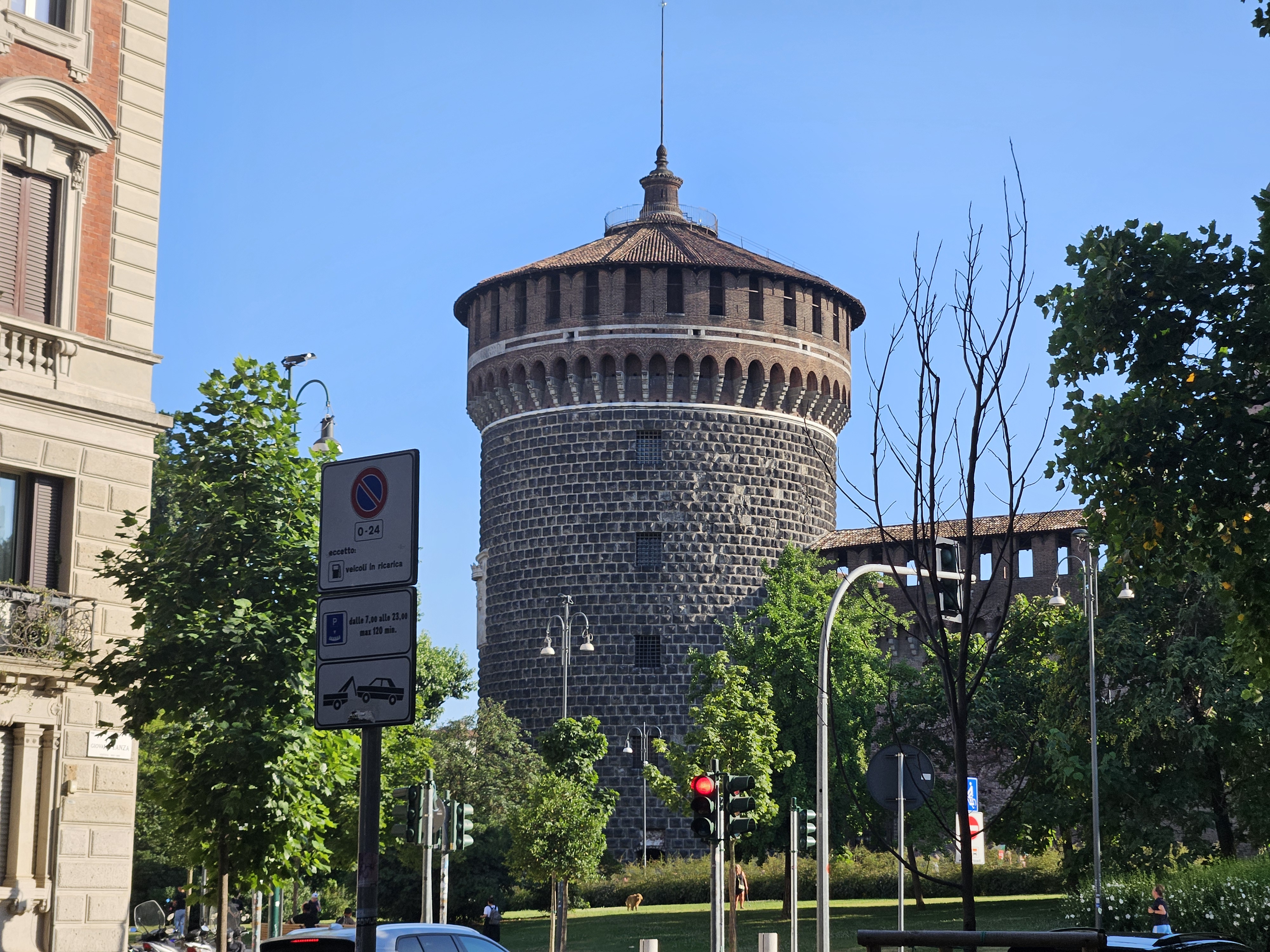
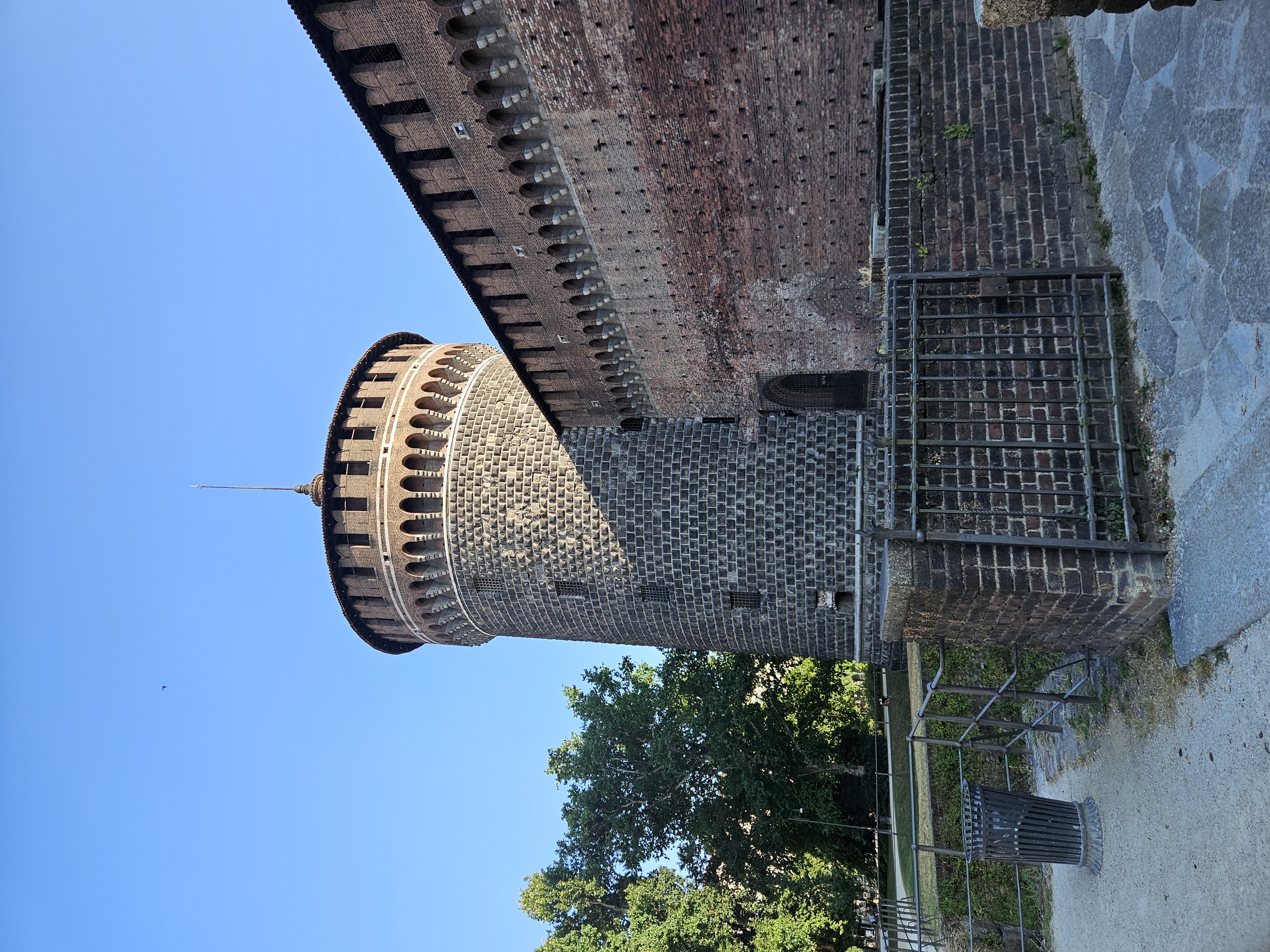



## **Who built the fortress?**
The fortress was originally built in the 14th century, in 1368, under the reign of Galeazzo II. Visconti, then ruler of Milan. The initial goal of this fort was to secure the power of the Visconti family, which then ruled Milan and its surrounding areas. The construction of the fortress was a strategic response to political tensions and military insecurity. It was an era when powerful rulers from different parts of Italy, as well as from other parts of Europe, were looking for ways to secure their territories.
The fortress was built on the site of an old castle, and the basic plans included four large towers at each corner with extensive defensive walls, a deep moat and access only via a bridge. The construction was ambitious, designed to provide not only safety but also a powerful visual impression. The architecture of the fortress reflects the styles of the late Middle Ages, with military elements, but also the growing influence of Renaissance aesthetics.
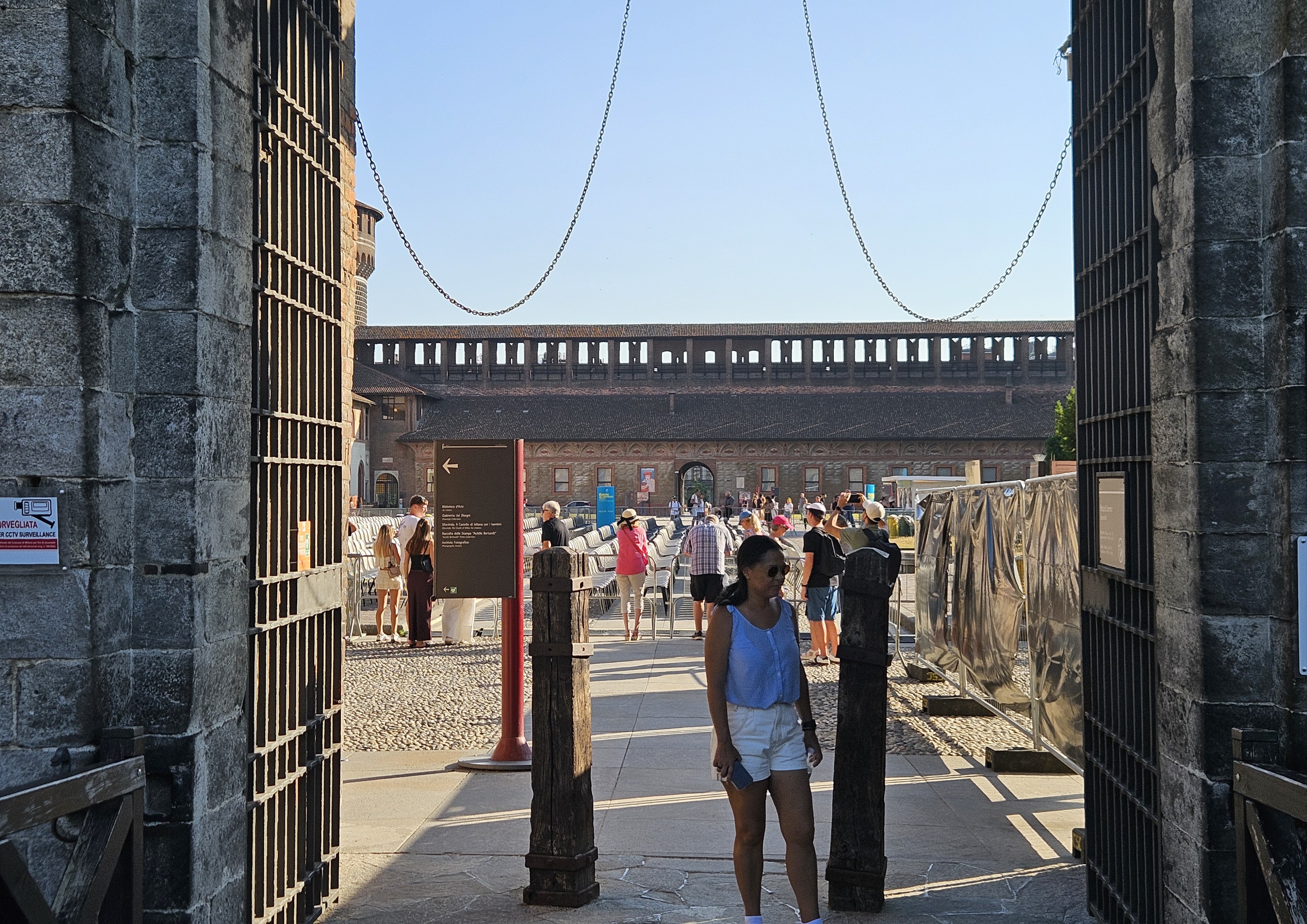

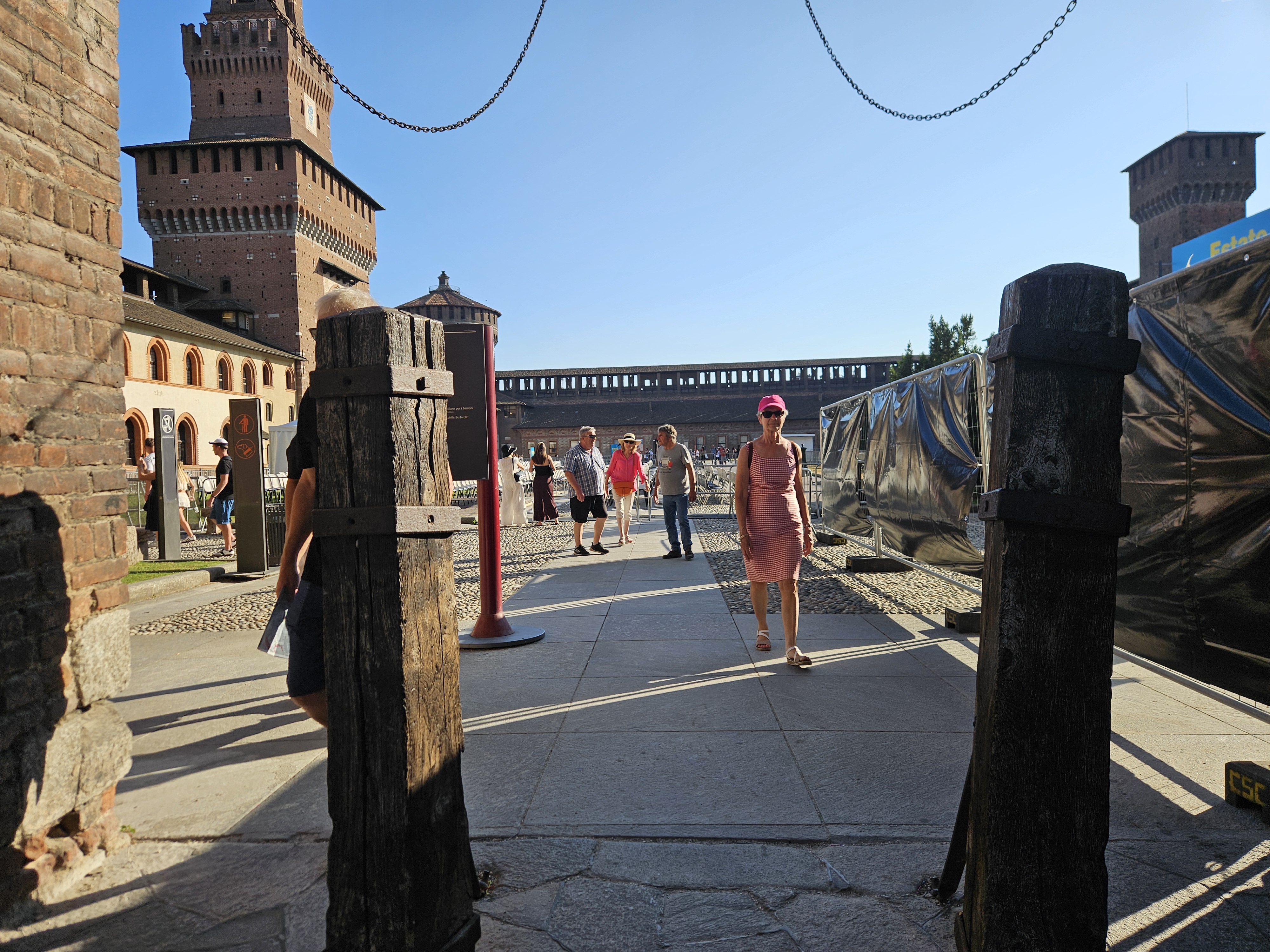
## The Sforza family
In the second half of the 15th century, after the fall of the Visconti family, Milan experienced a significant political change. Francesco Sforza, a military commander, managed to seize power in Milan and became the new ruler. Although the Sforza were military commanders, they quickly turned into one of the most powerful aristocratic families in Italy. With the assumption of power, the Sforzas decided to rebuild and expand the fortress, which was a symbol of their power and dominance.
Francesco Sforza hired Bramante and Leonardo da Vinci to restore the fortress and transform it into a true Renaissance castle. Da Vinci was responsible for many technical innovations, including the design of defence systems, while Bramante was responsible for introducing Renaissance elements into the architecture of the fortress. This resulted in a harmony between the military and artistic space.
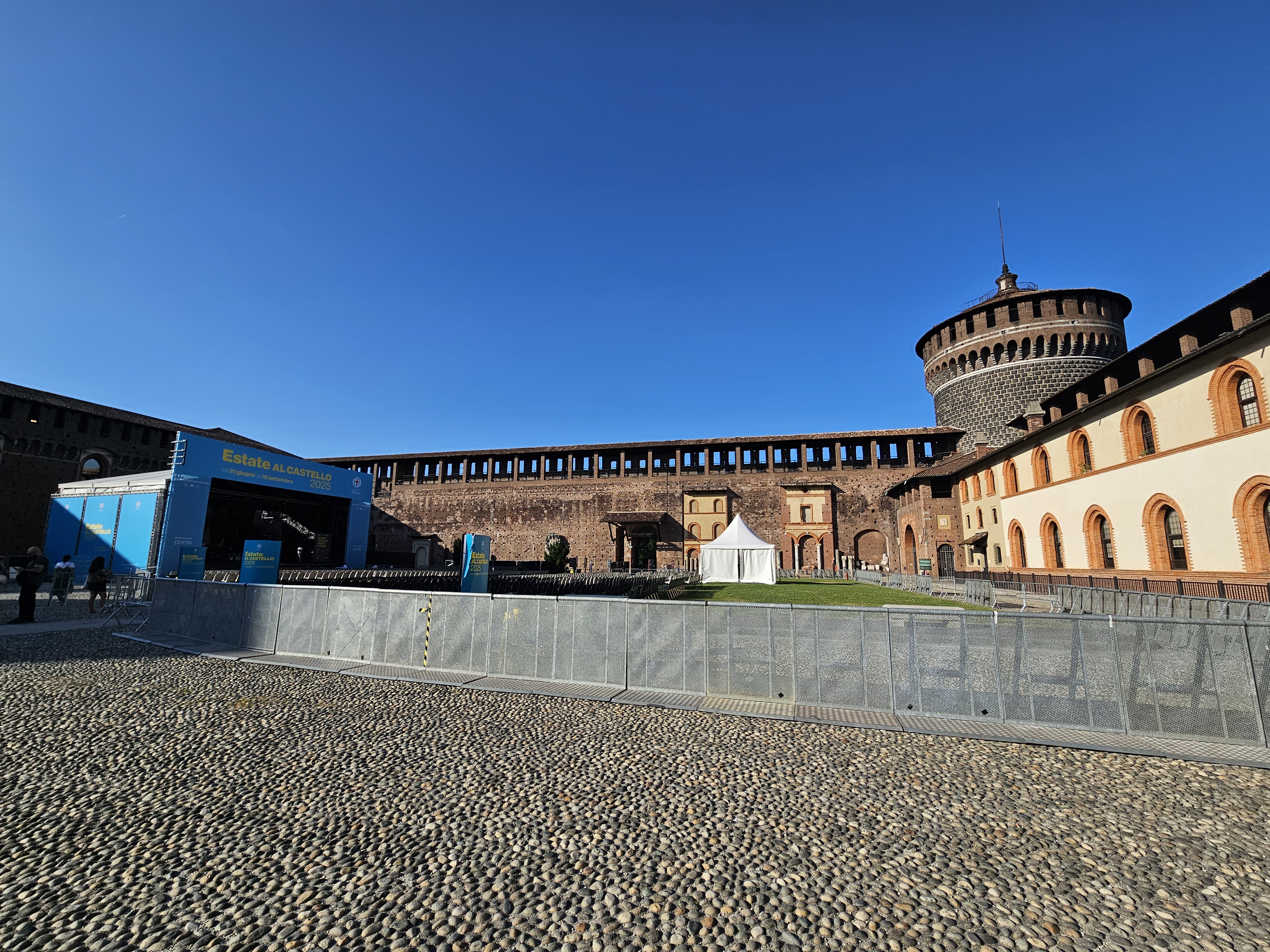
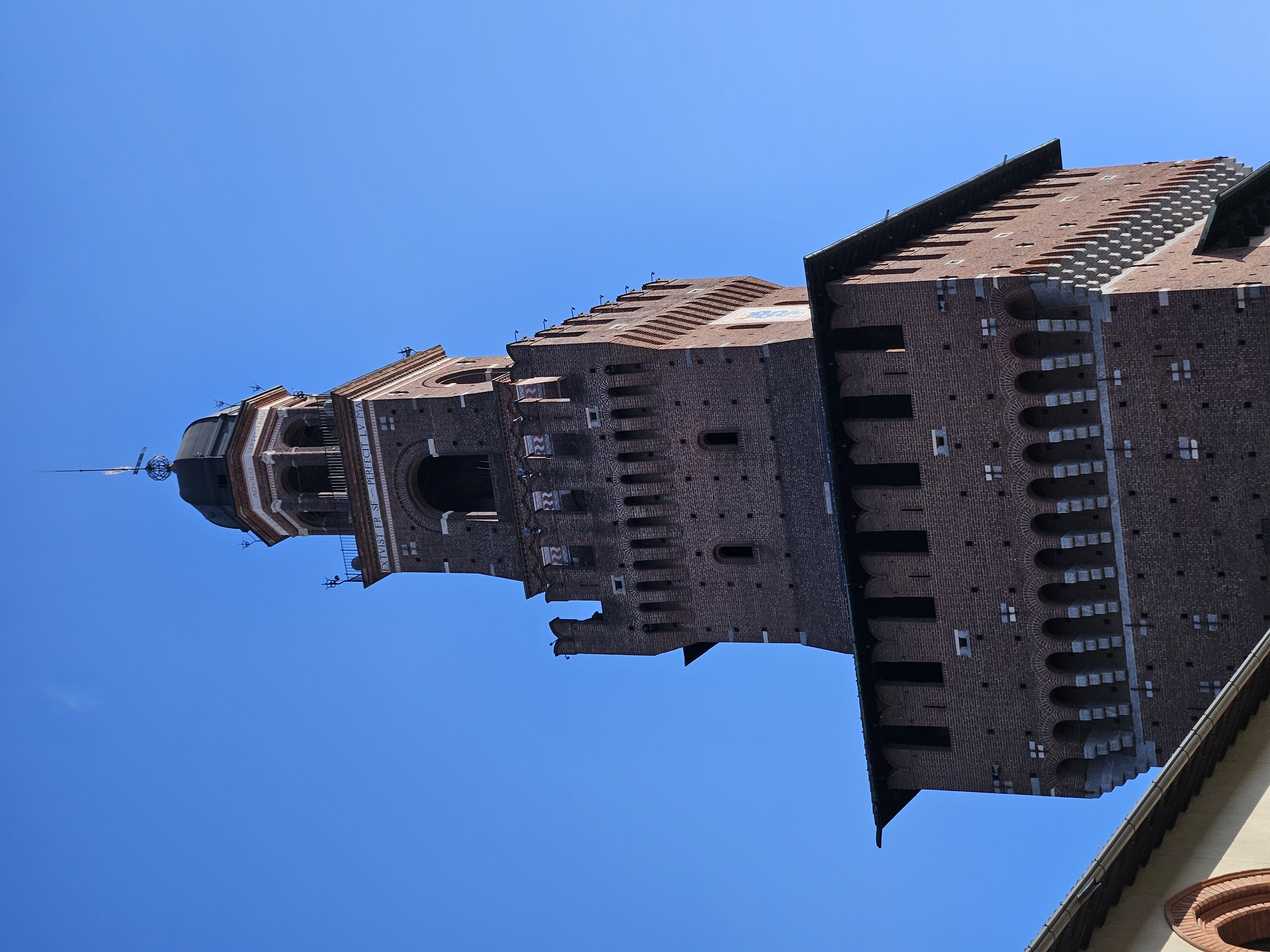

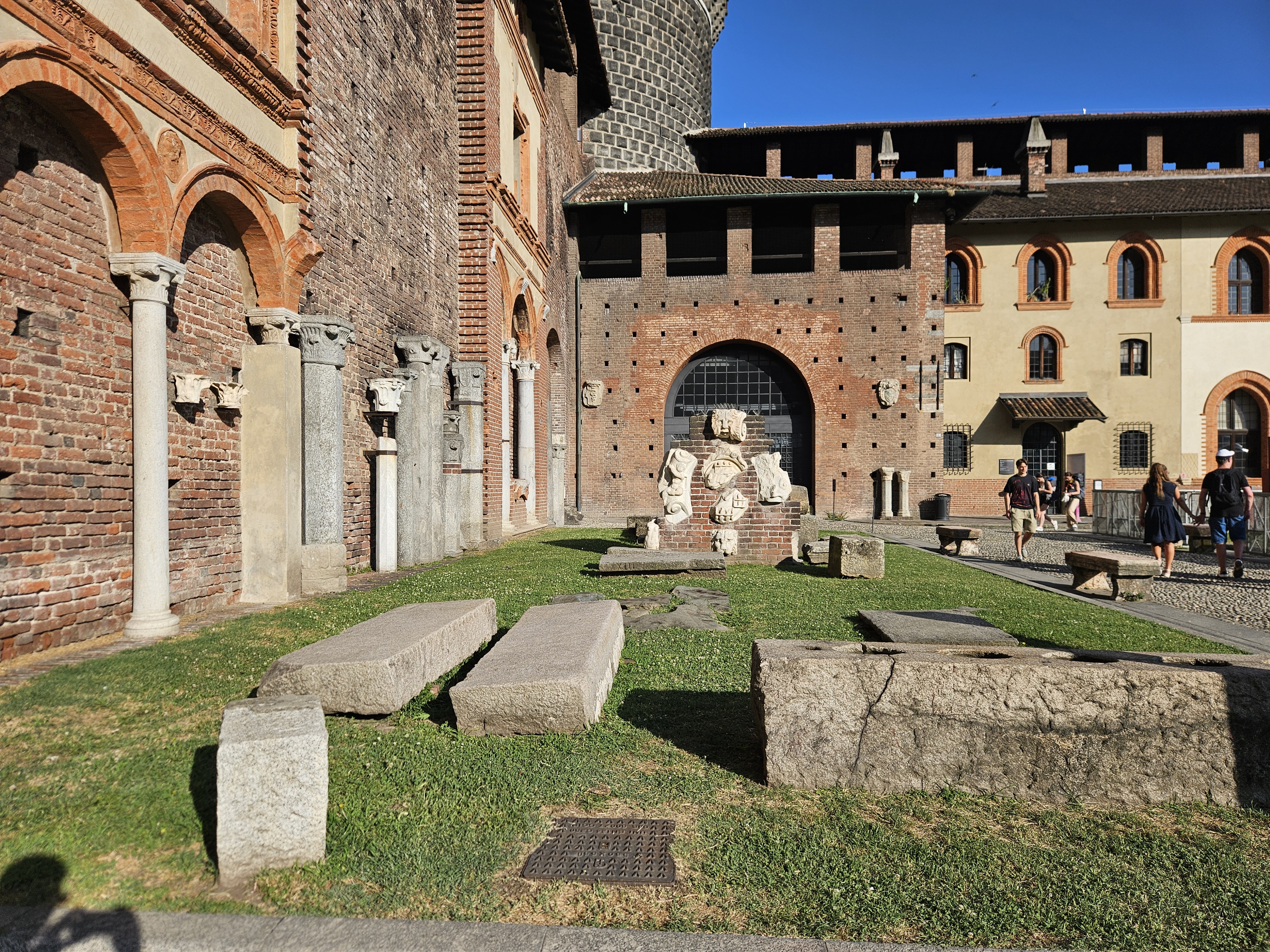
## Renaissance restoration and cultural heritage
During the reign of the Sforza family, the fortress was transformed from an ordinary military fortress into a monumental Renaissance complex. The Sforza family was known for their passion for art and culture, and they managed to gather numerous artists and intellectuals of the time in the fortress.
The fortress became home to many famous people, among them Leonardo da Vinci, who worked on his famous projects at the Sforza court, including "The Last Supper" in the church of Santa Maria delle Grazie. Da Vinci also produced many technical drawings for the improvement of the infrastructure of the fortress, as well as aids for military applications.
The Sforzas were also patrons of artists such as Donato Bramante and Michel Giorgio, who greatly contributed not only to the restoration of the fortress, but also to the general cultural rise of Milan at that time.


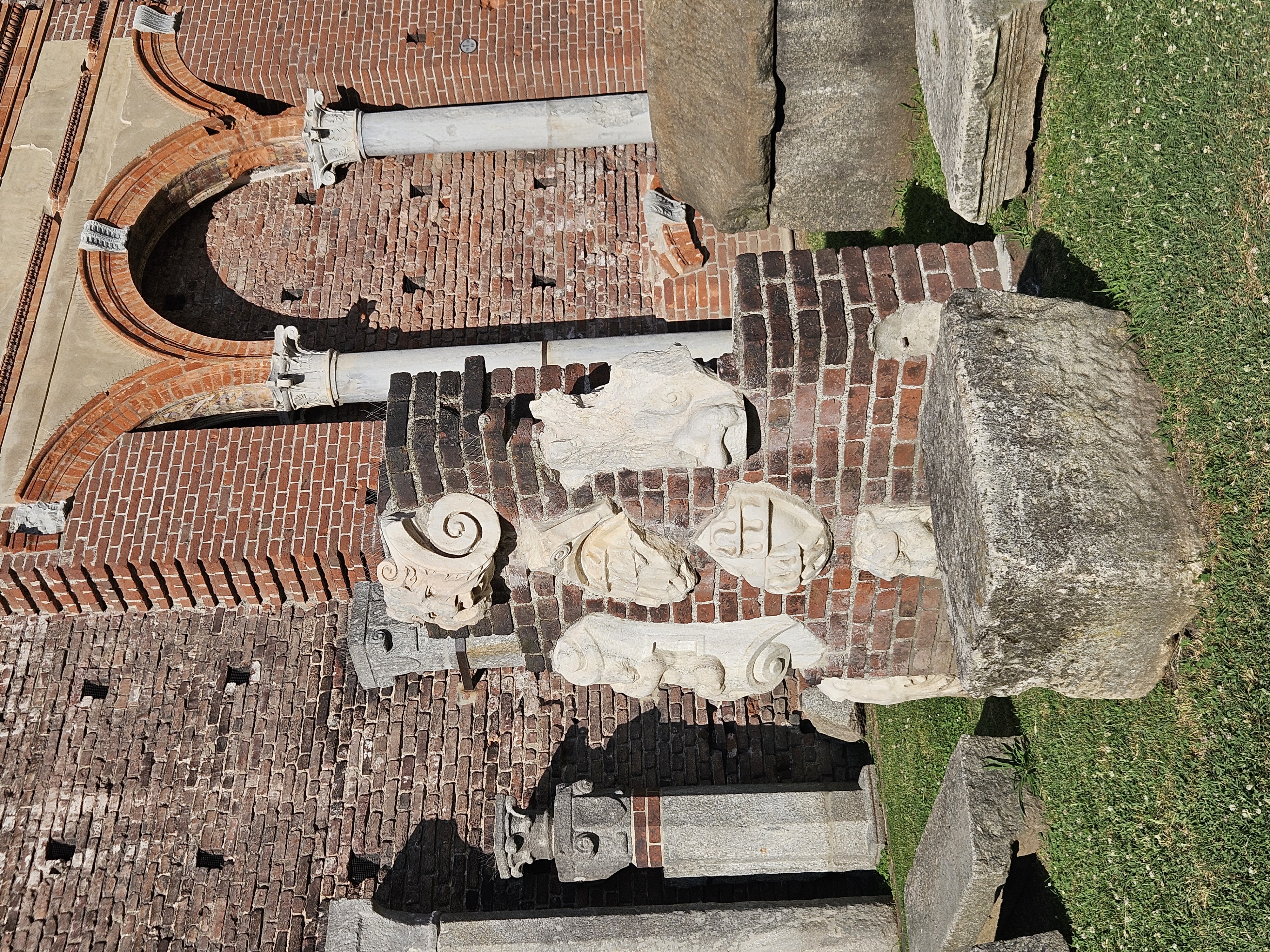
>If you have the opportunity to visit the fortress in Milan. Be sure to stop at the entrance and look at the beautiful open-air gallery. It adorns the walls of the fortress and decorates its incredible history.

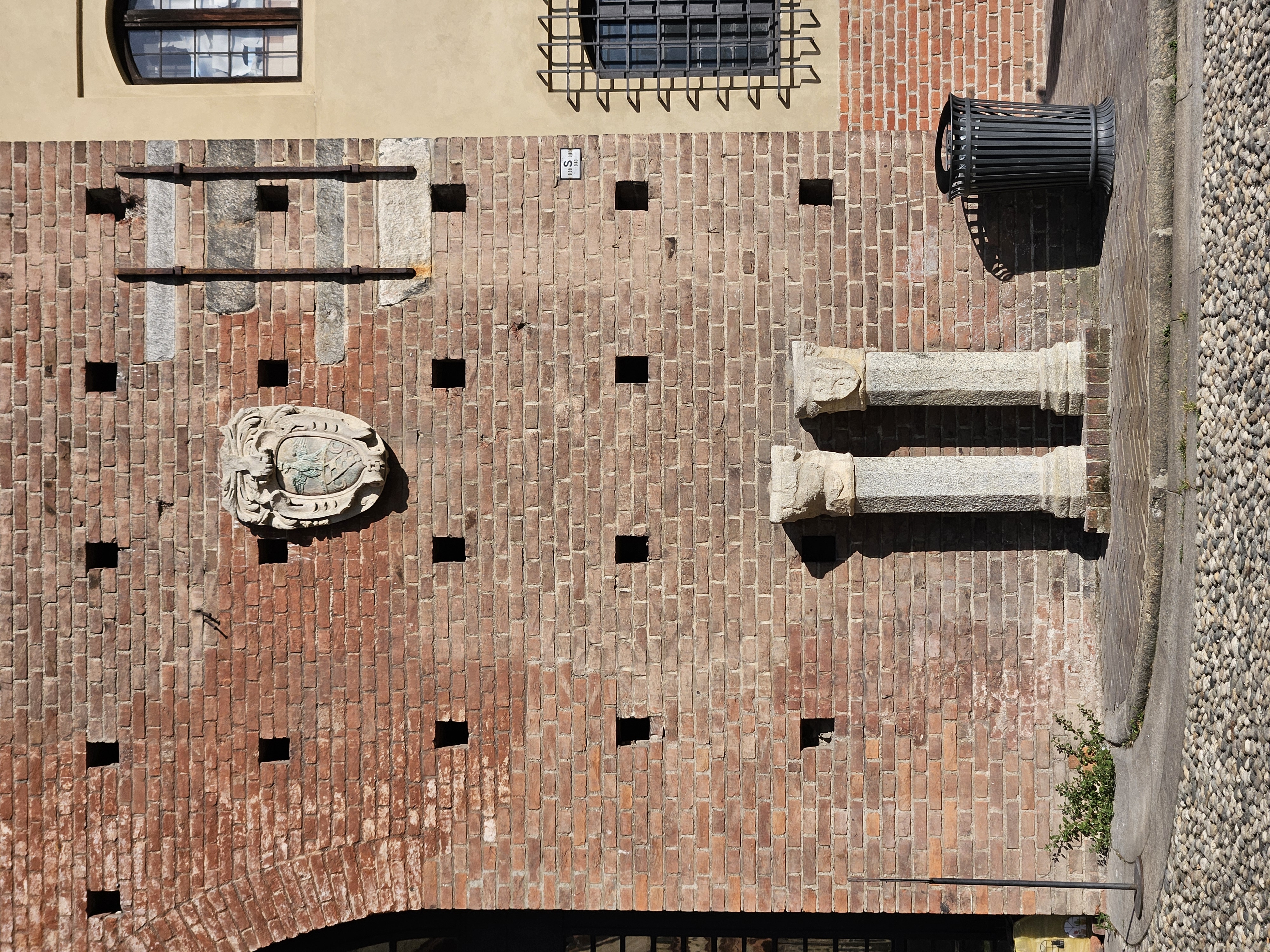
## Fall of power
Although the fortress was a symbol of power and cultural recognition during the Sforza era, its fate changed over the following years. After the fall of the Sforza dynasty, Milan experienced political turbulence. In the 16th century, after Spain took over, the fortress was used as a military post, and its architecture was partly changed and adapted to new military needs.
Over the years, the fortress underwent numerous changes. During the Napoleonic era at the beginning of the 19th century, the fortress became a military base for the French army. Later, under Austrian-Hungarian rule, it was used as a command centre.
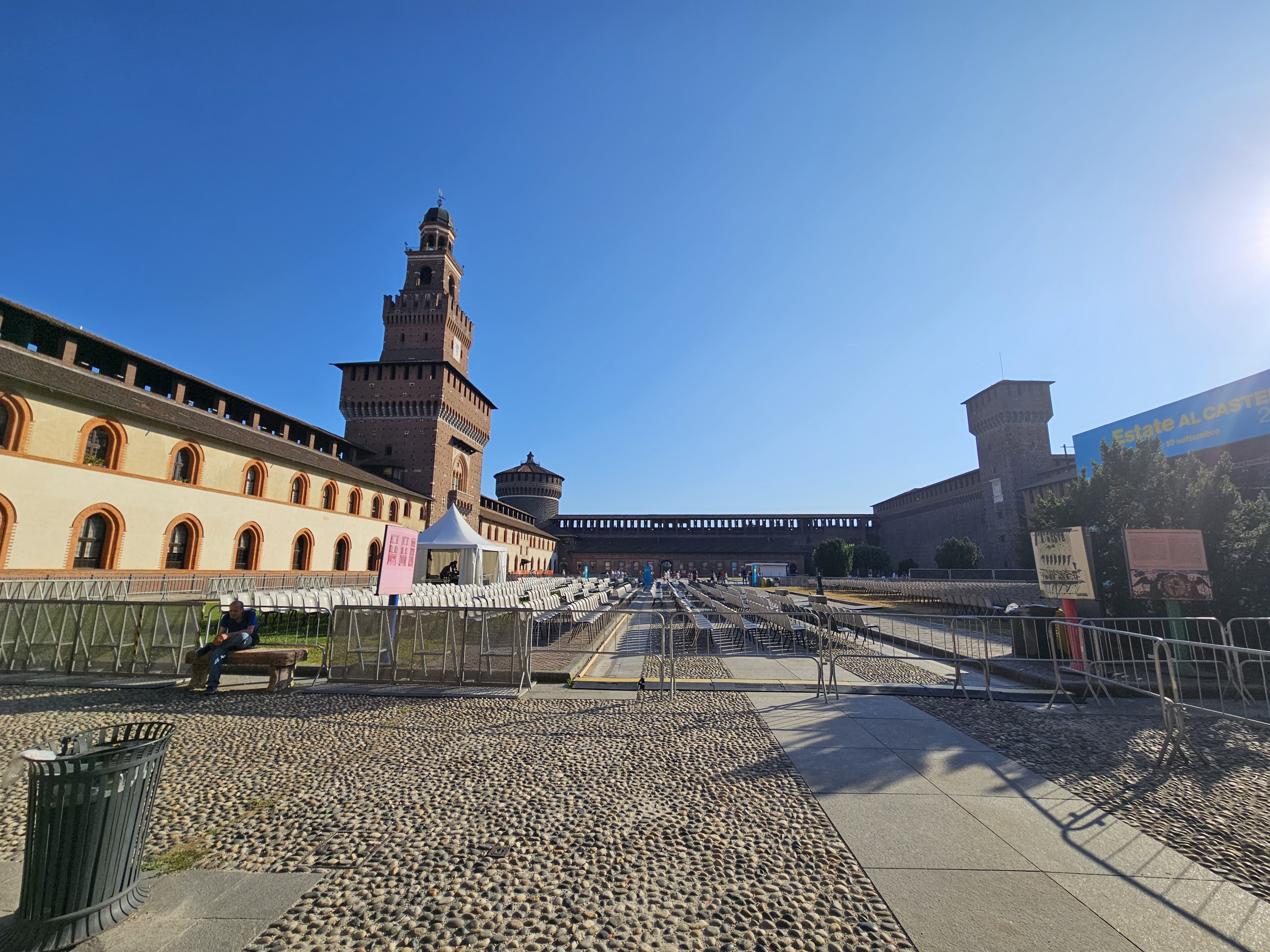
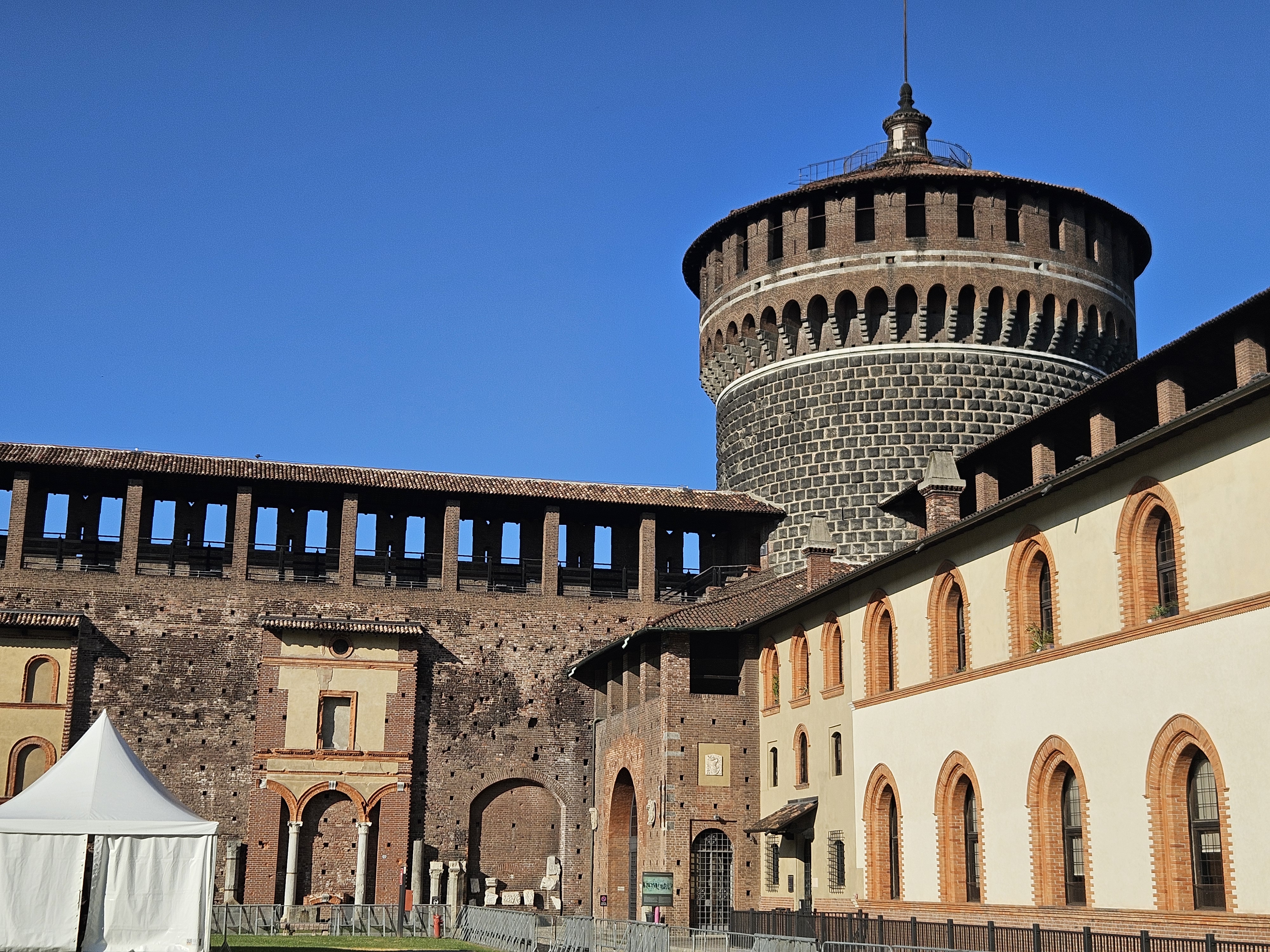

## Restoration
After its destruction during the Second World War, the Sforza fortress was gradually restored and returned to its former glory. Today, it is one of the most important cultural centers of Milan, home to many museums, galleries and historical collections. The fortress covers a large area, surrounded by parks and squares, and is often used as a place for cultural events, exhibitions and manifestations.
The fortress hosts the Museum of Art, the Museum of Antiquities, the Museum of Instruments and other cultural spaces that contain collections from antiquity to modern times. Its architecture and history make it an indispensable part of the touristic and cultural identity of Milan.
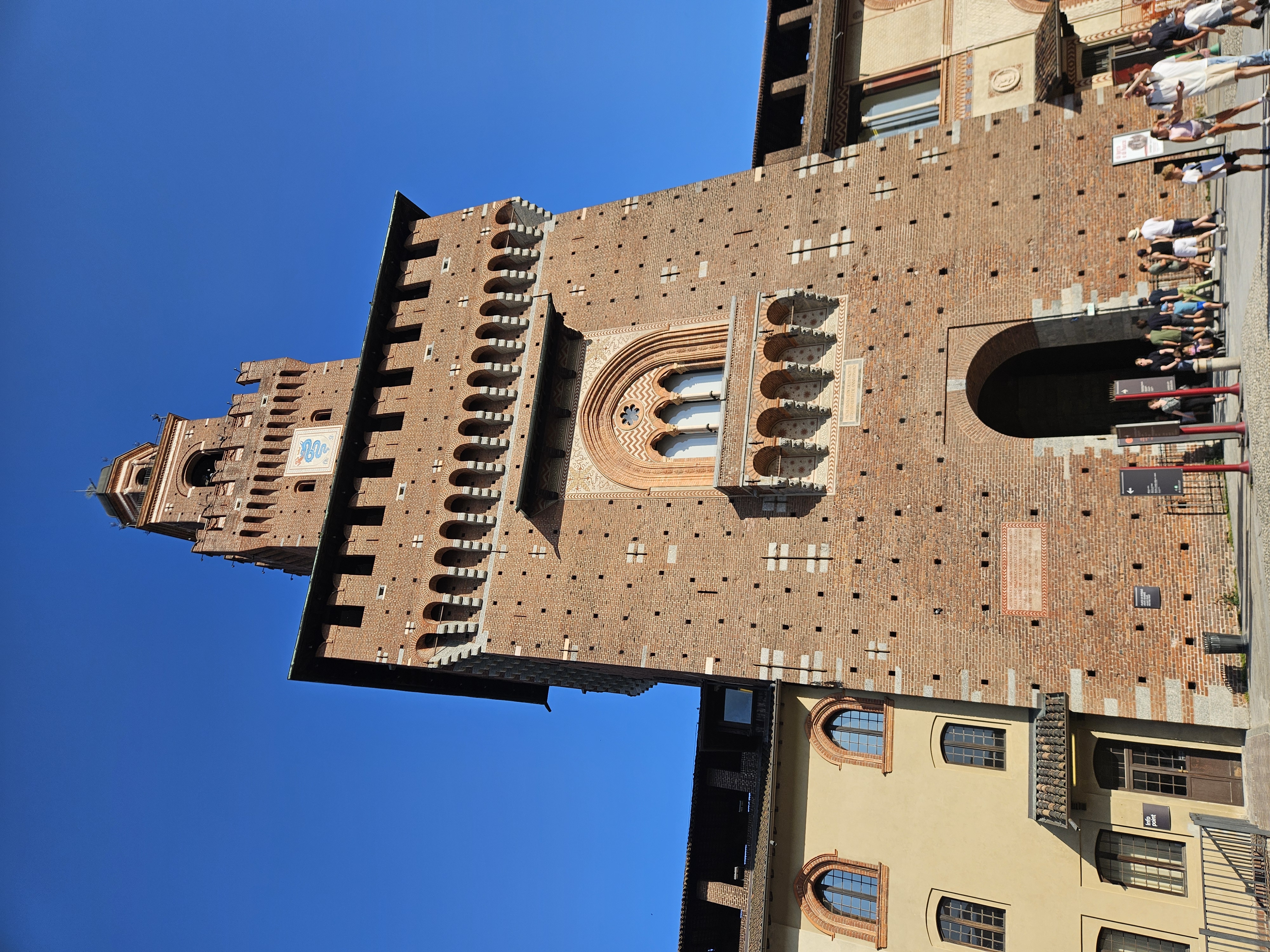

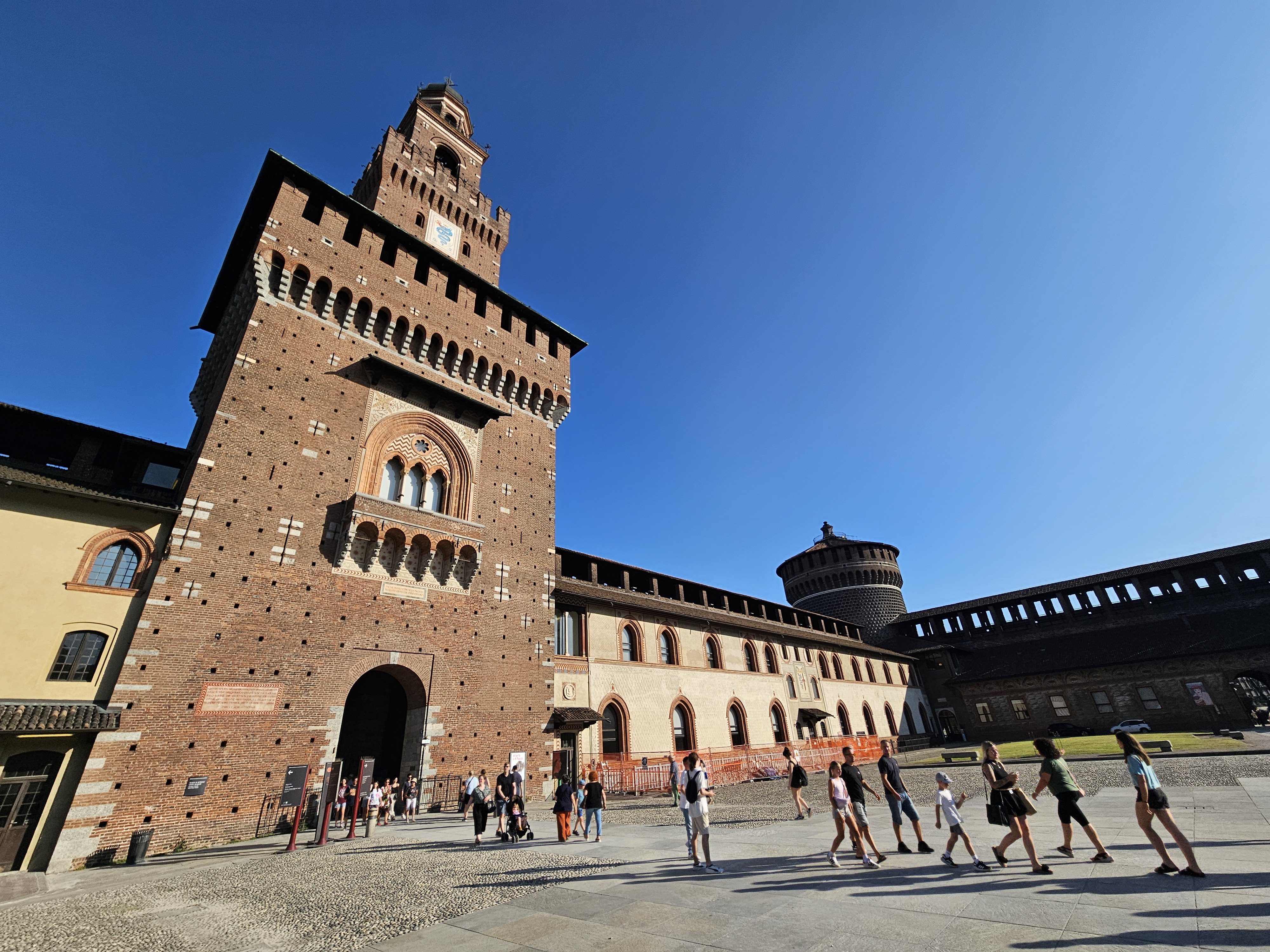
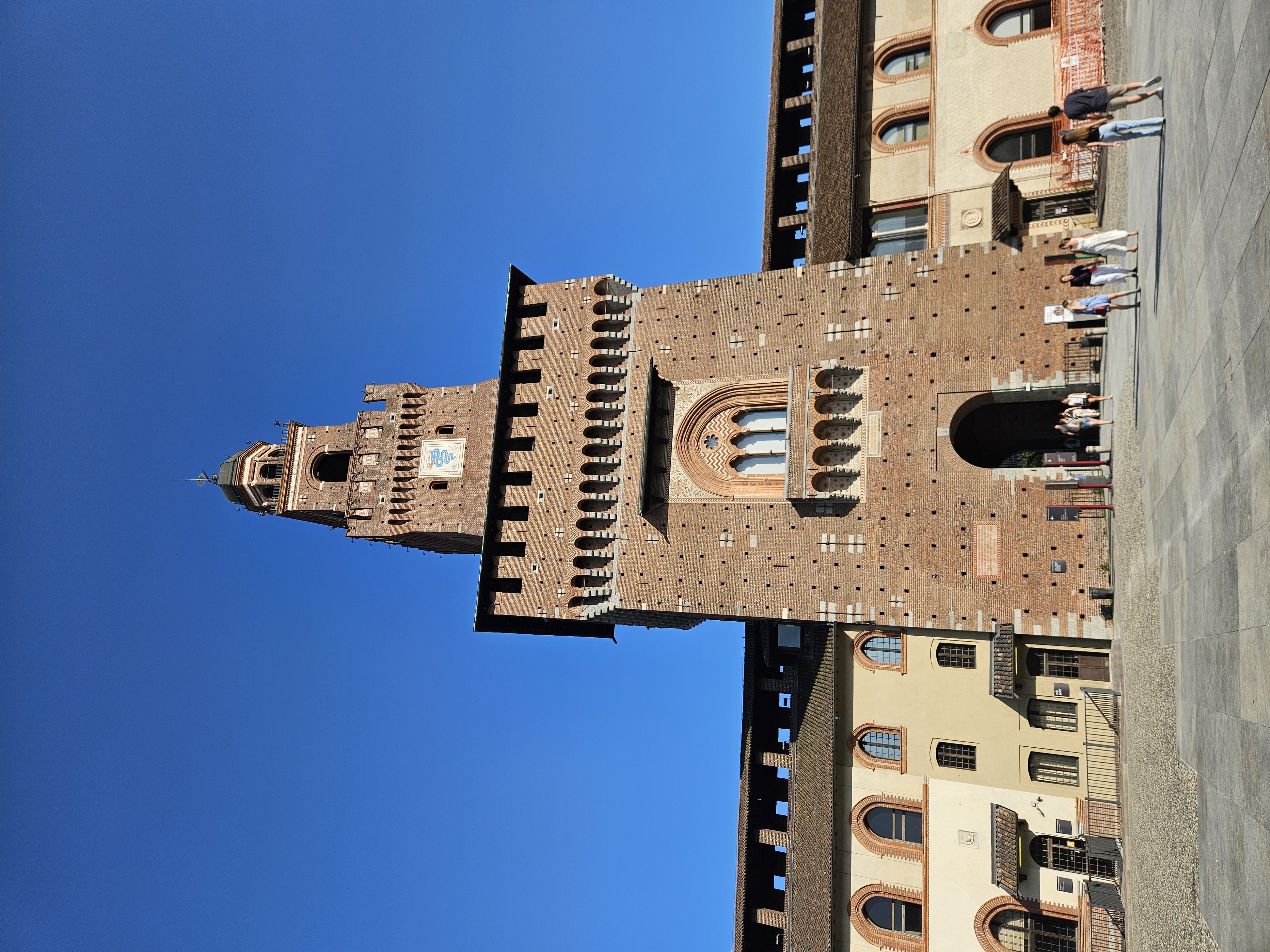
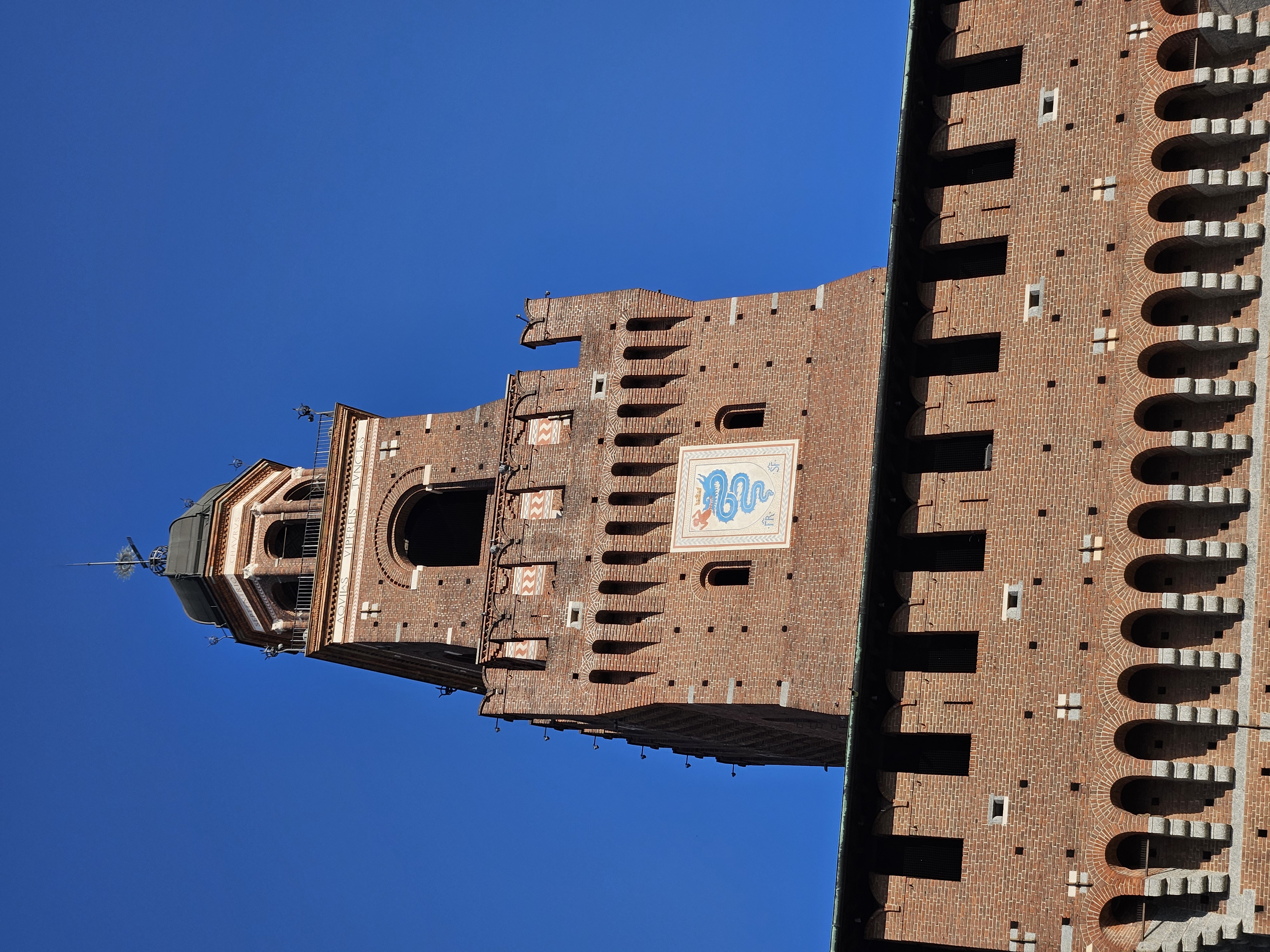
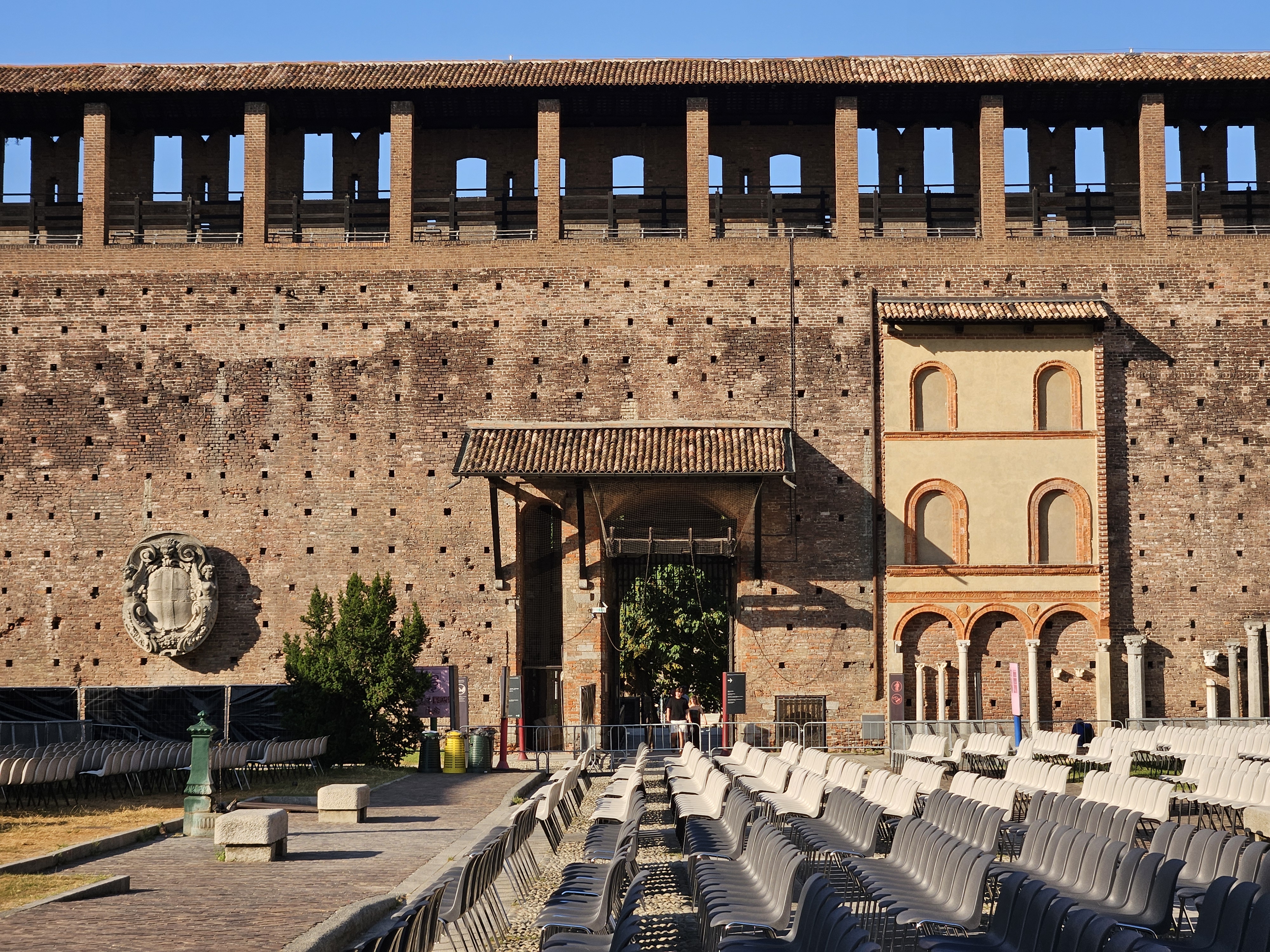
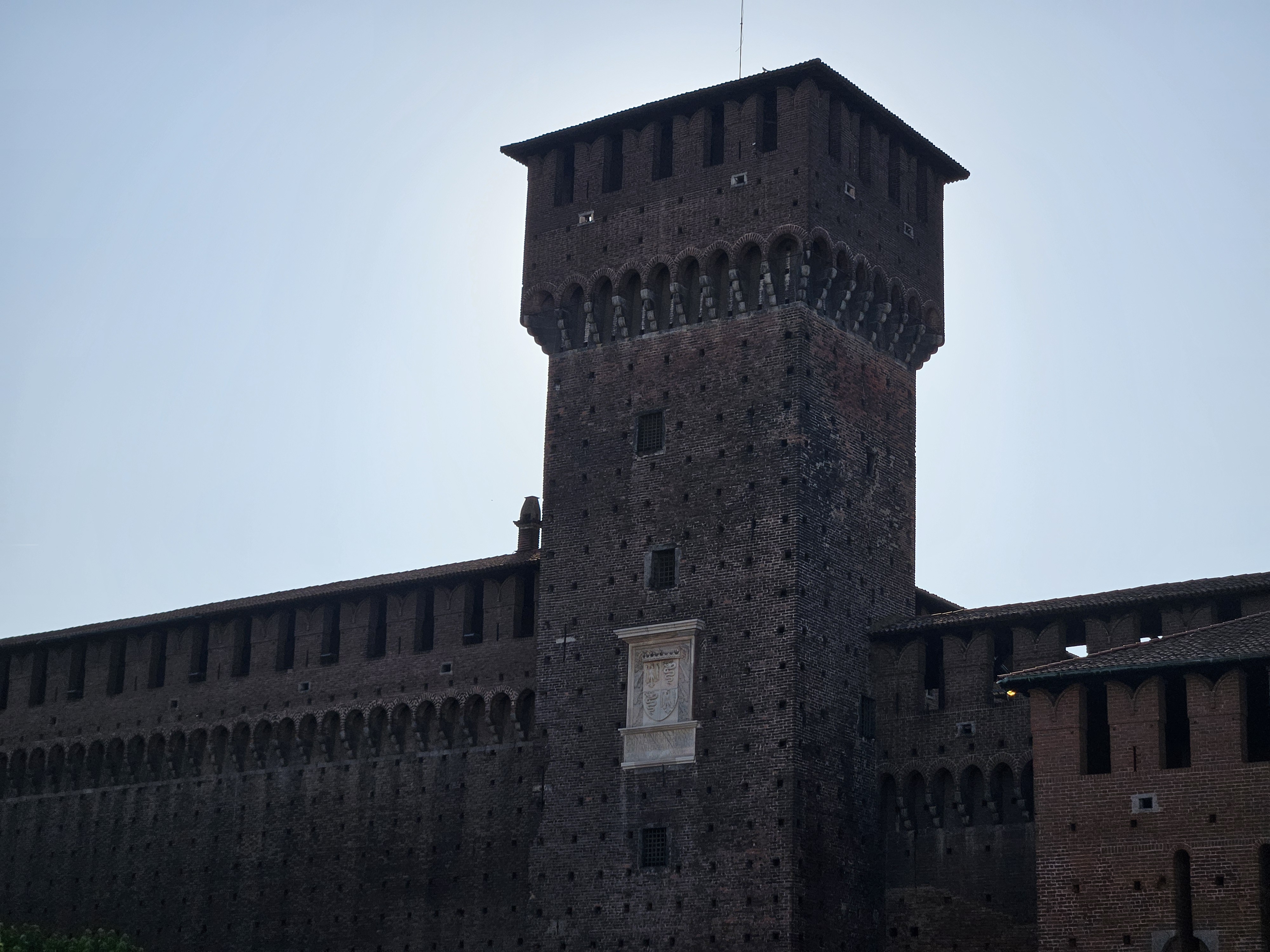
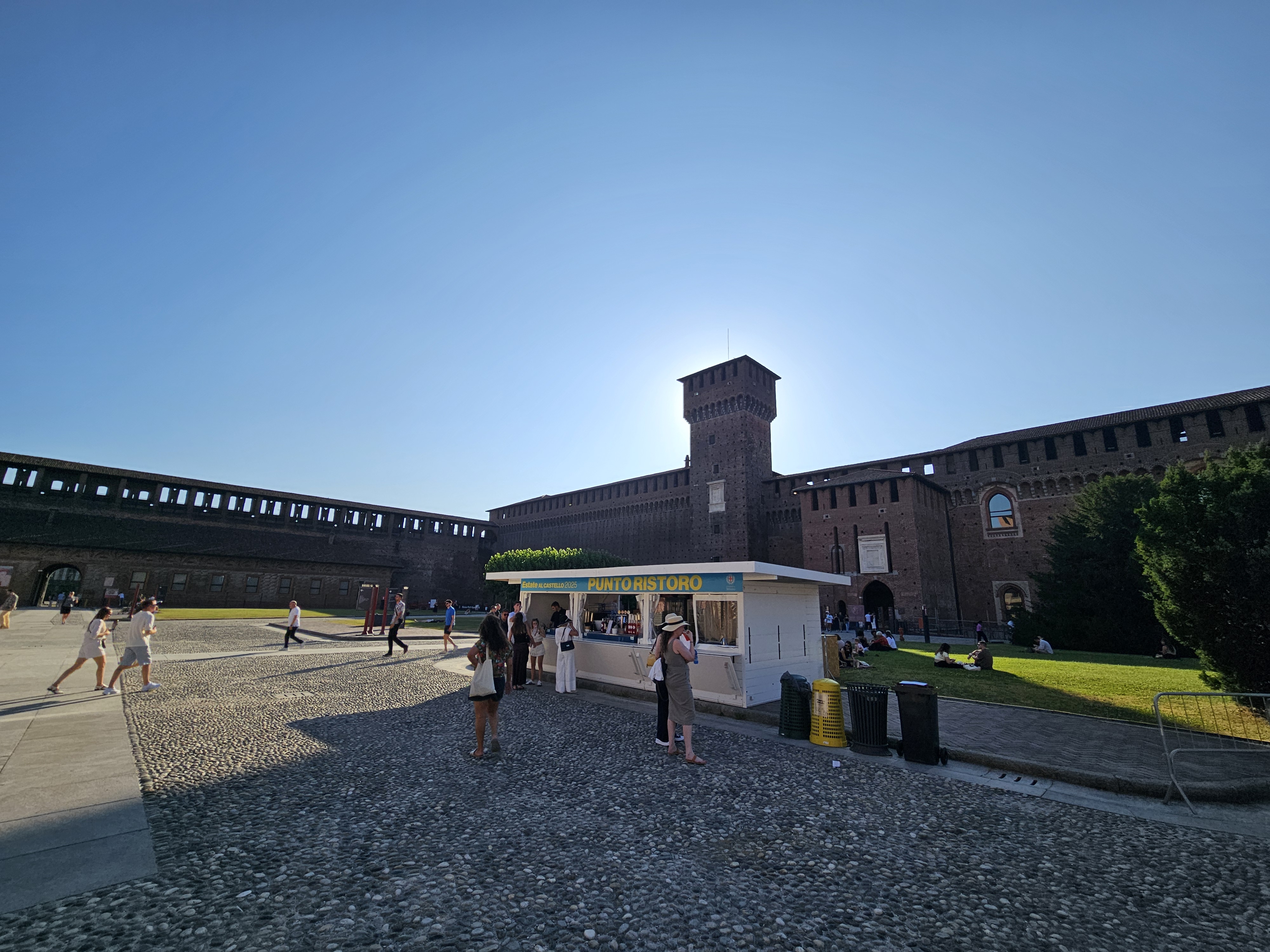

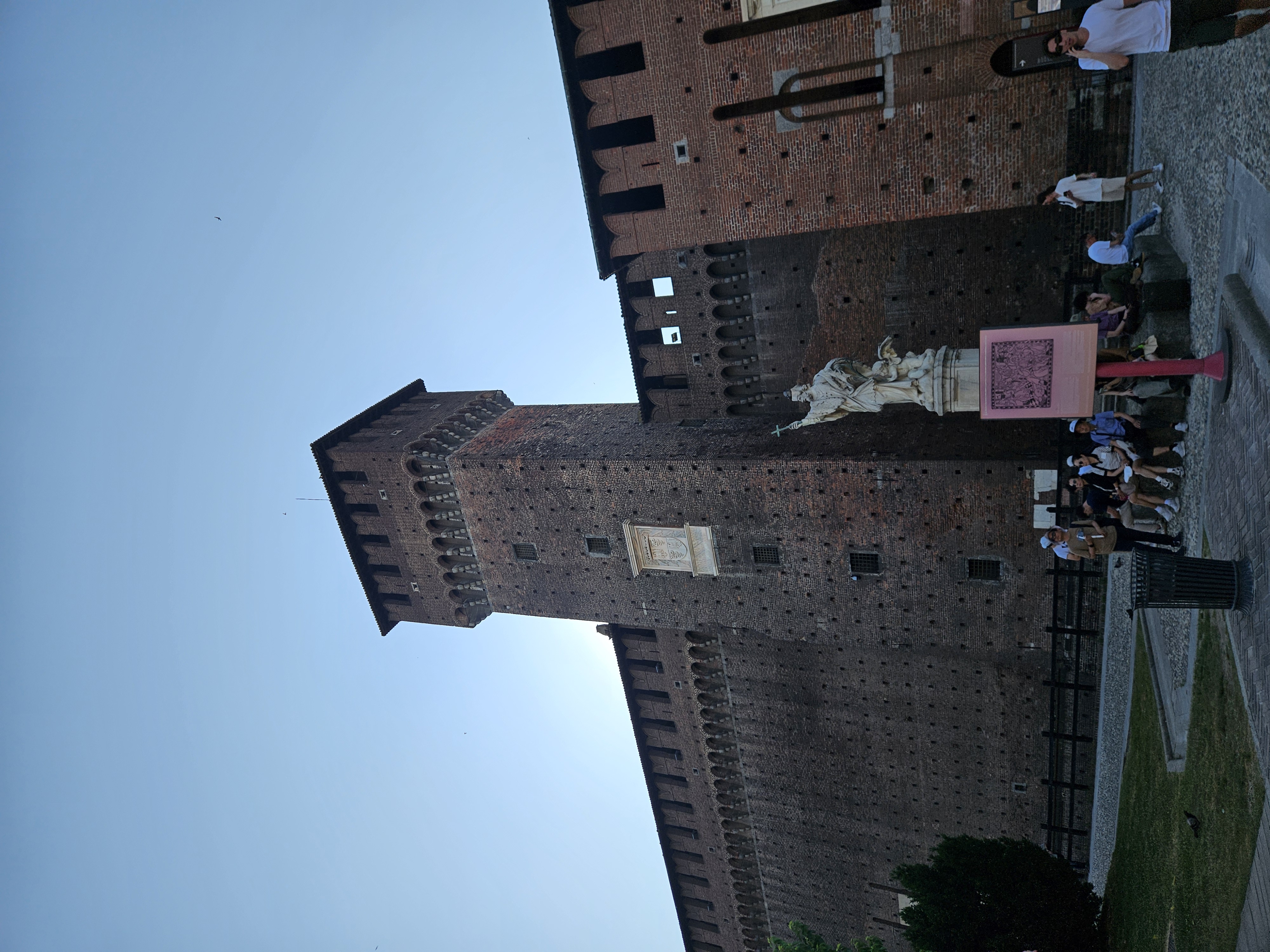

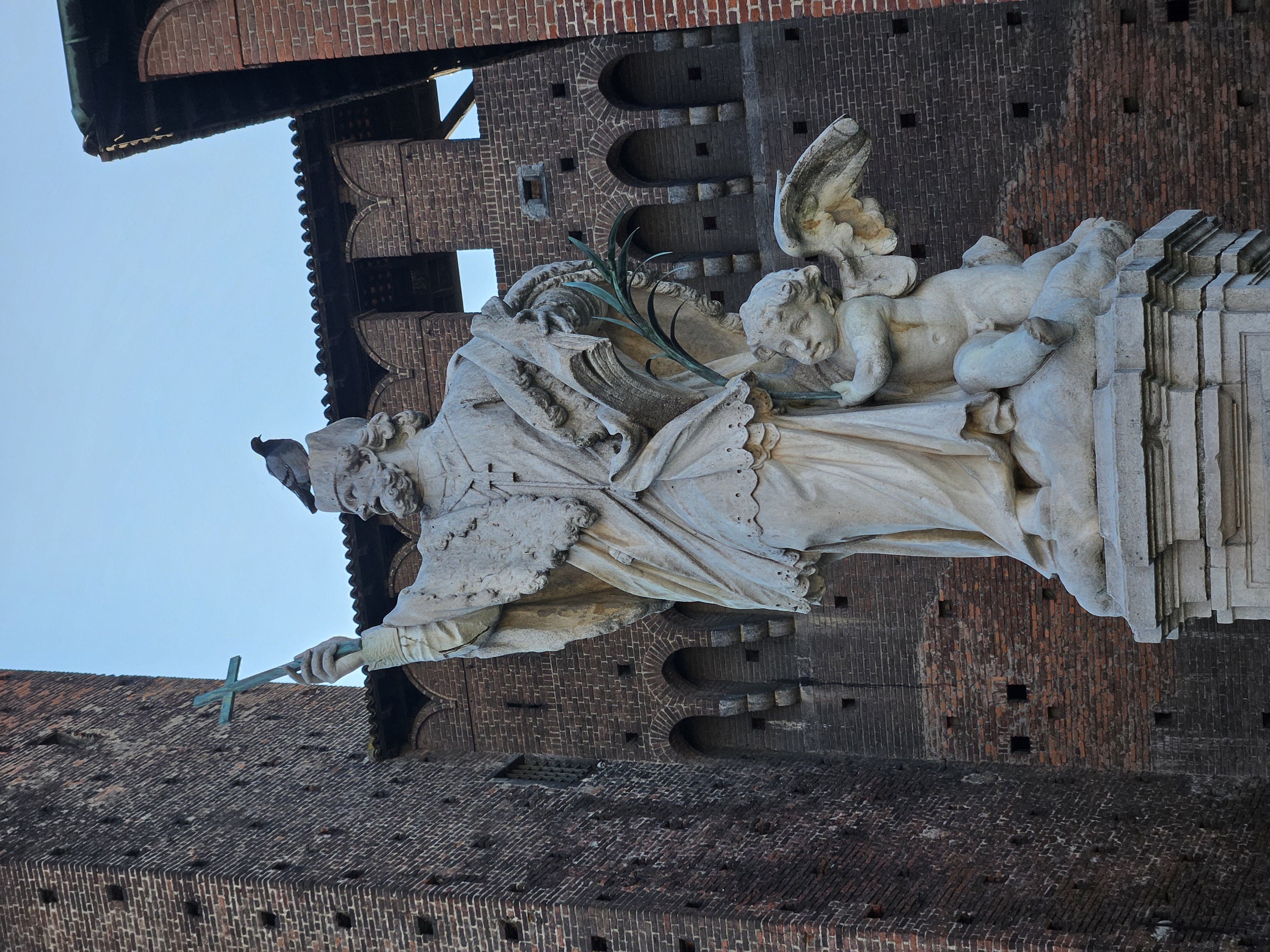
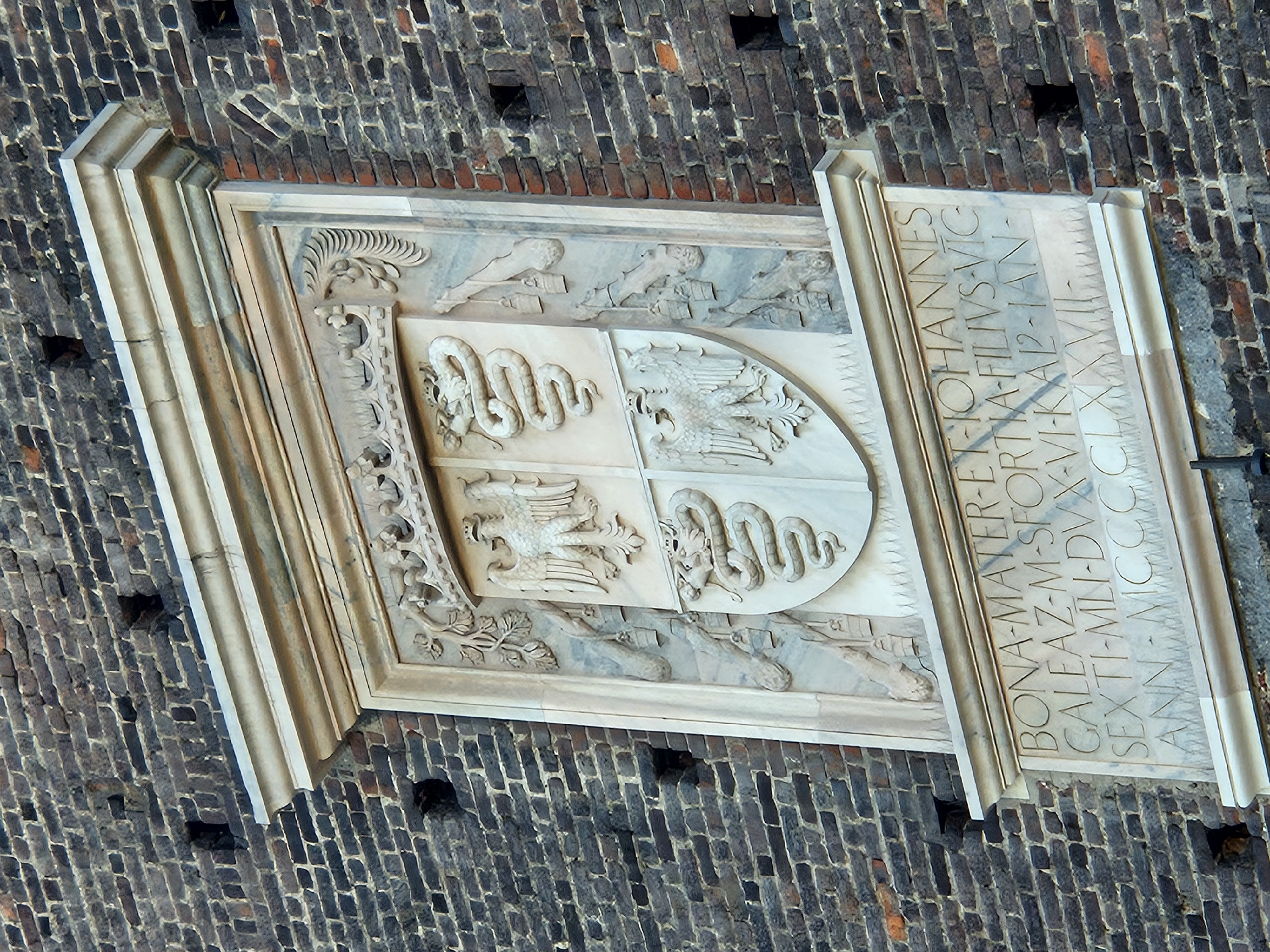
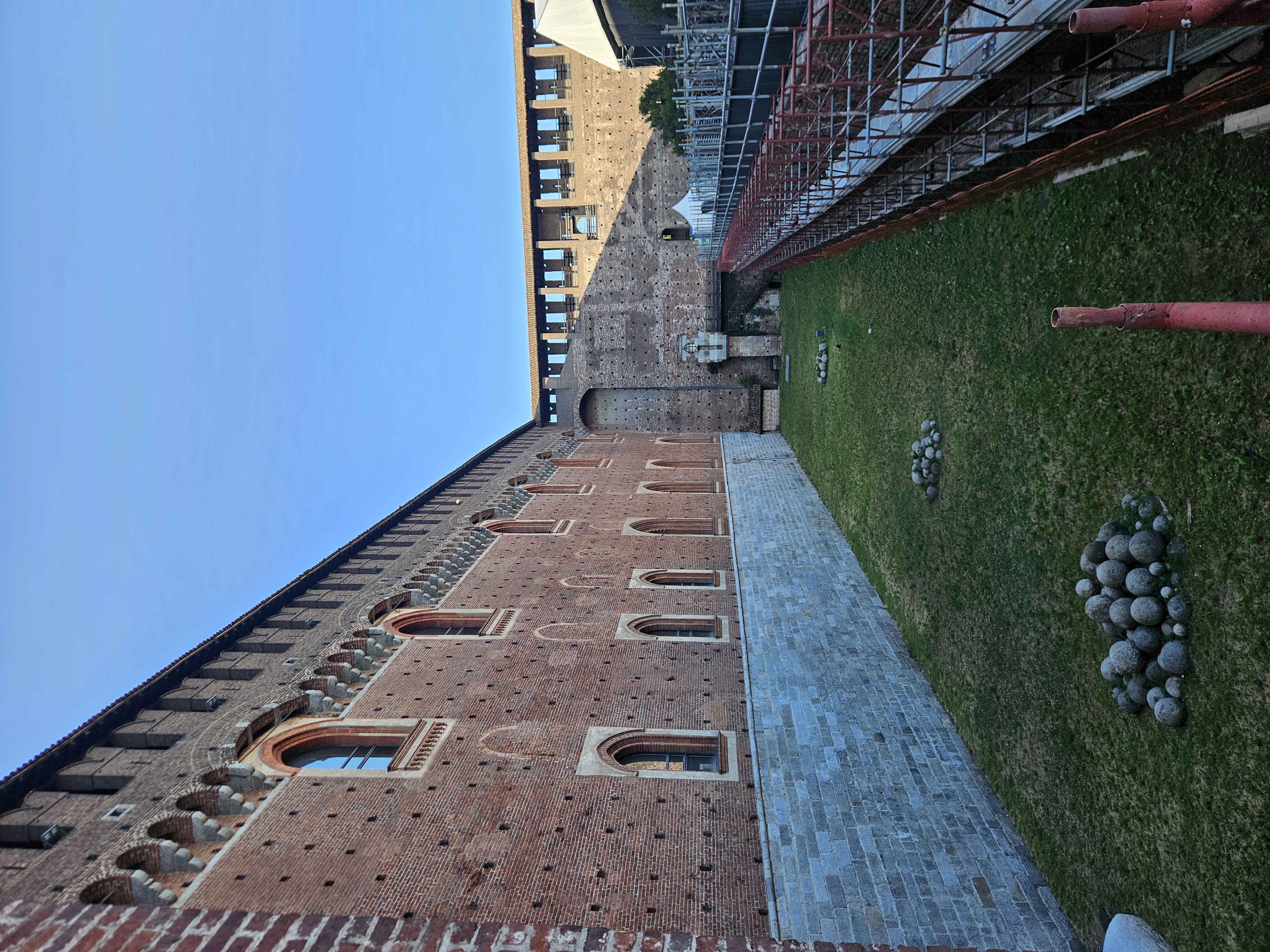

#
The Rocchetta
Inside the magnificent Sforza fortress in Milan, apart from the impressive outer walls, towers and courtyards, there is another significant architectural element, the Rocchetta, which is particularly important for its historical and military function. Rocchetta is an inner fort within the fortress, located in the center of the complex, which over time served as the last line of defence, and today is home to many museums and cultural spaces.



## The history of Rochetta
Rocchetta was an integral part of the original structure of the fortress, but its development and shaping did not begin immediately. Galeazzo II. Visconti, who started building the fortress, did not immediately plan this kind of inner fortification, but over time, it was considered necessary to secure an additional security point in the very heart of the fortress. This led to the construction of the Rochetta, which became a symbol of Sforza's power, but also the effectiveness of military architecture.
Rocchetta was designed as an area inside the fortress that would provide security for the ruler and the most important people in case of attack. The word "rocchetta" comes from the Latin word "rocca", which means a small, well-fortified and safe fortress. In this specific place, within the very walls of the Sforza fortress, high-quality defence systems were provided, including thick walls, military ditches and interlaced corridors that enabled a quick defence.


>At the entrance to the Rochetta, you come across a beautiful gallery in the entrance. You can notice for yourself that this is not a classic boring fortress, this is a fortress full of artistic spirit.
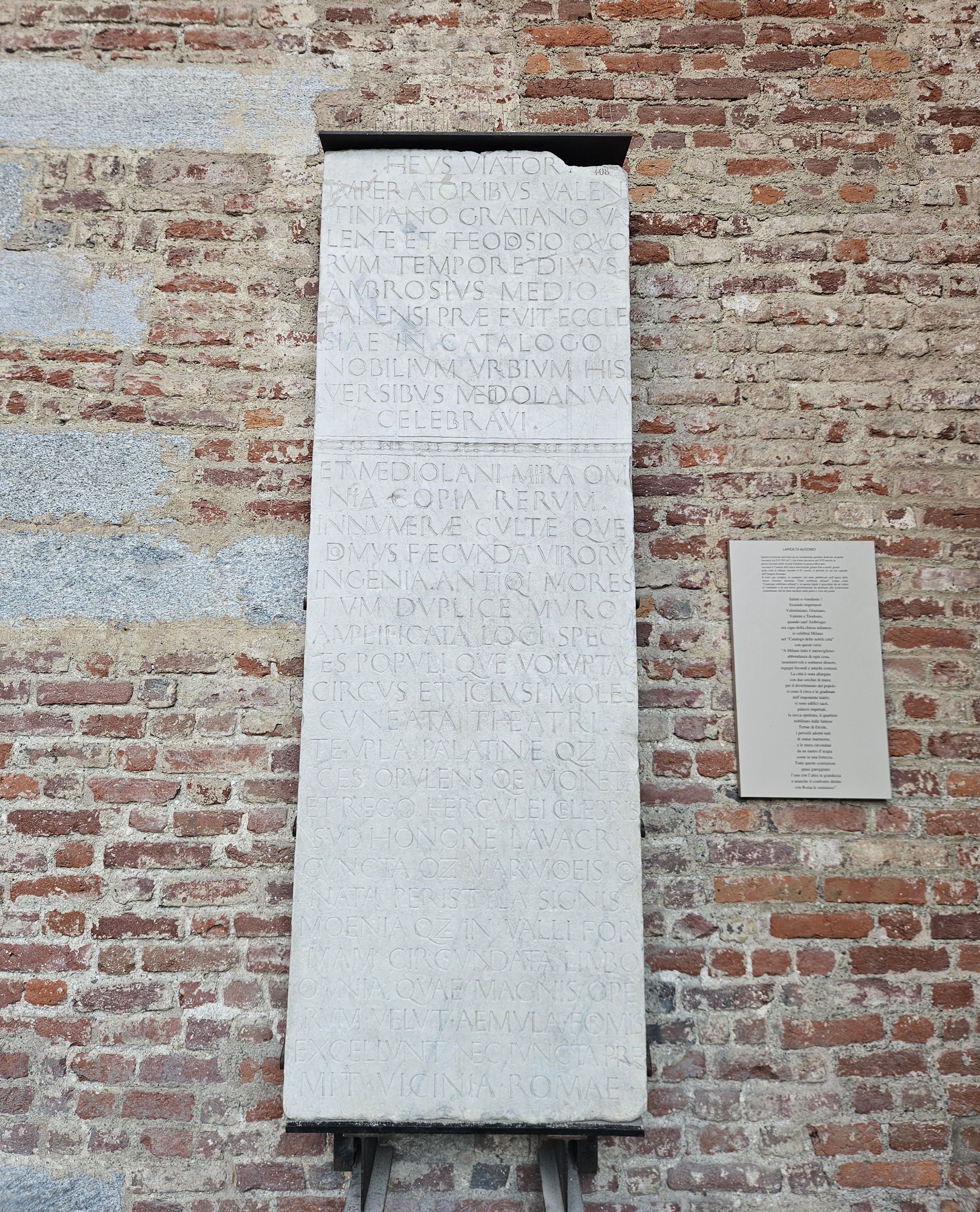
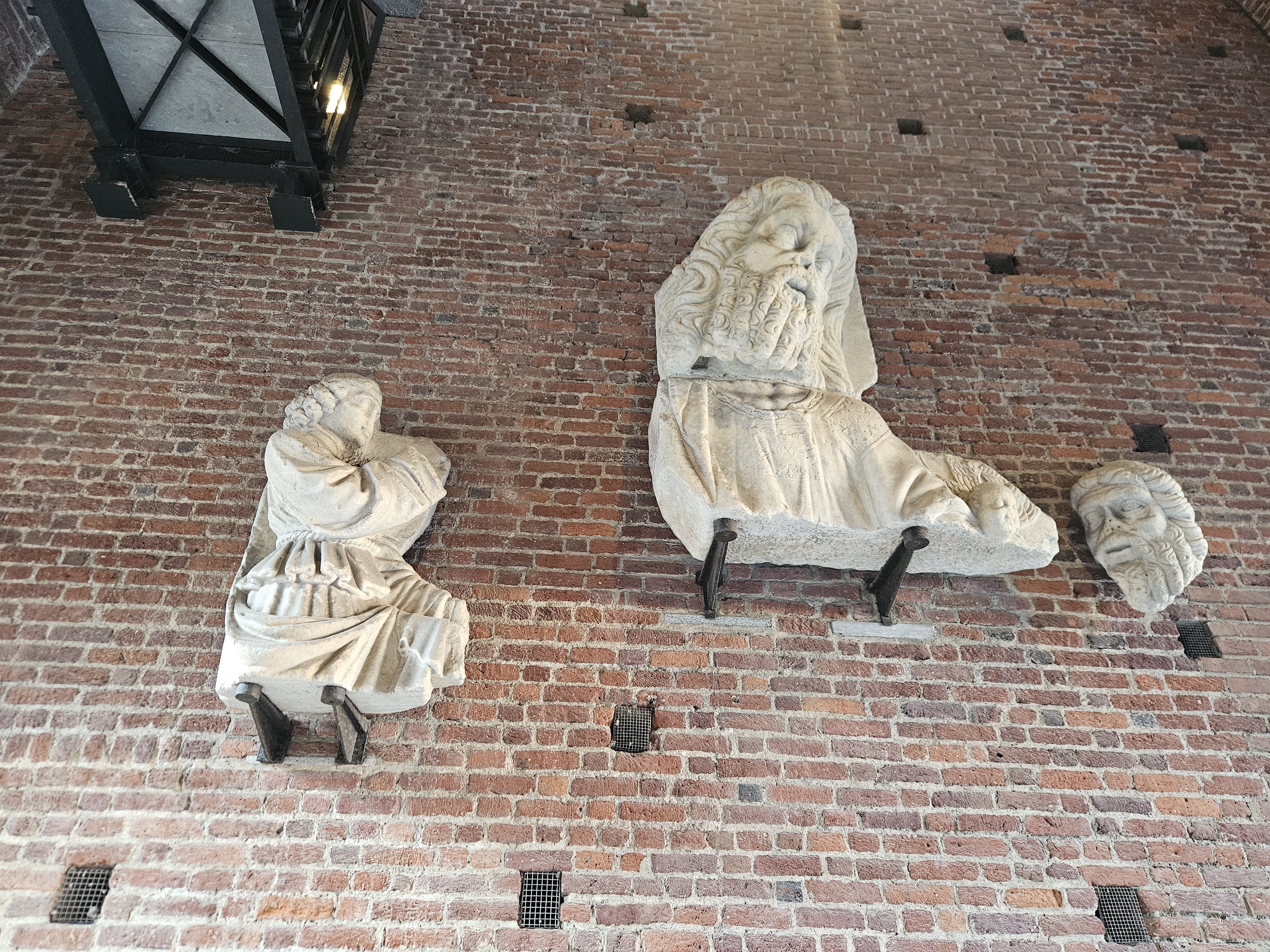
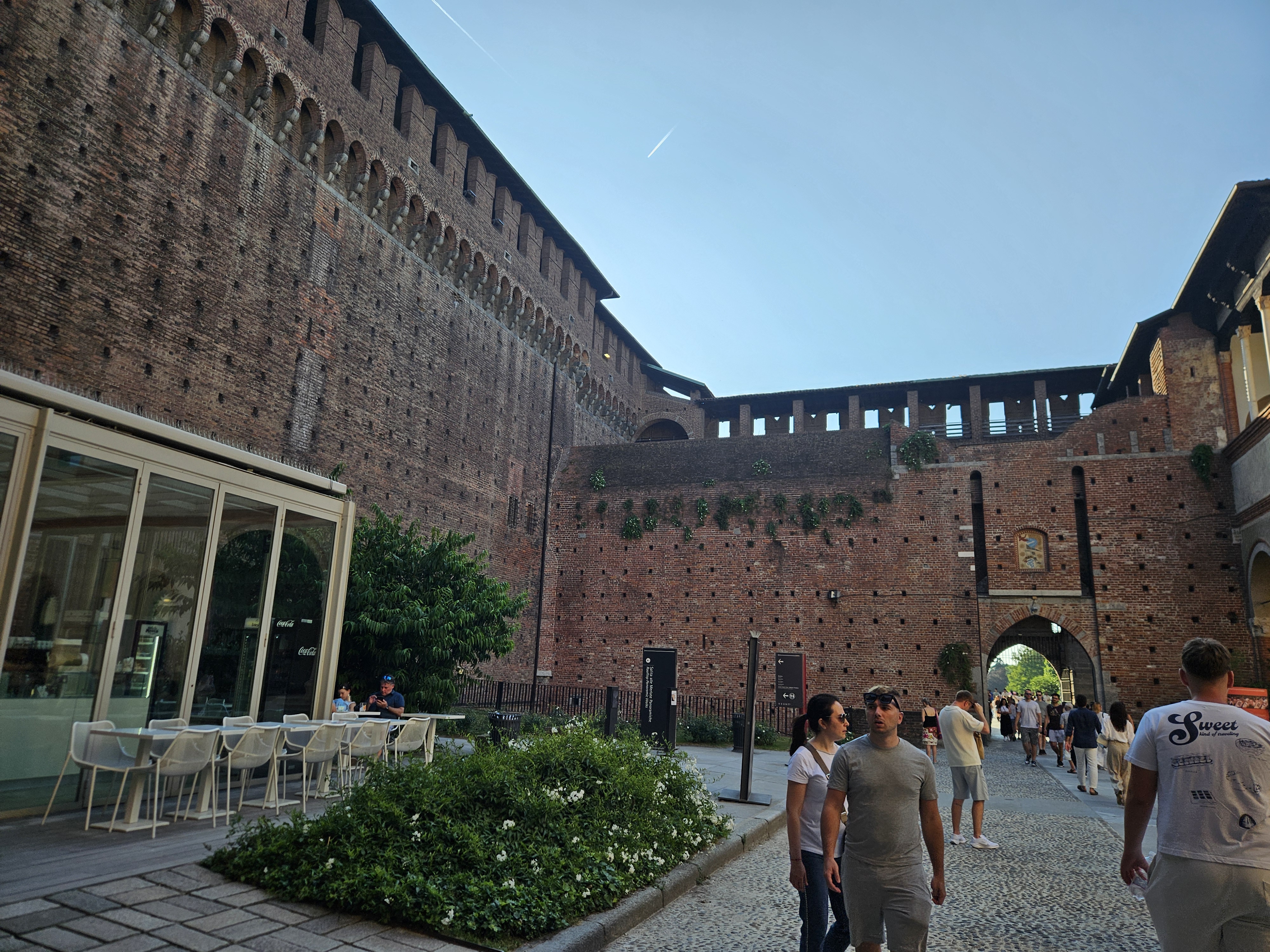
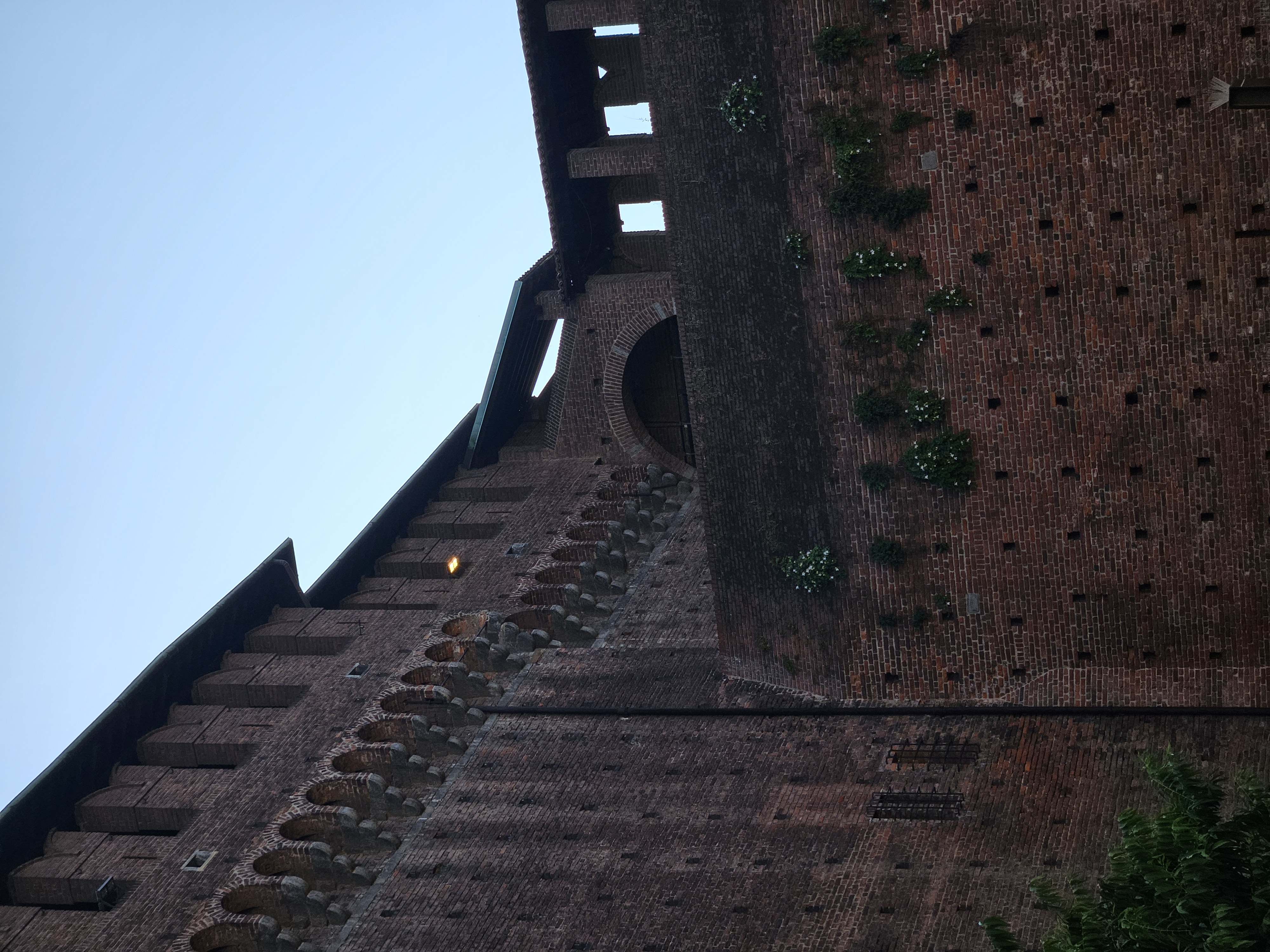
During the time of the Sforza family, Rocchetta became a key point not only for military reasons, but also as a place where the rulers stayed in the most critical moments. At that time, Rocchetta was an area fortified with even more sophisticated military systems, such as armouries, rooms for military commanders, and tall watchtowers from which entire areas of Milan could be monitored.
Over the centuries, Rocchetta adapted to new military techniques and needs. During the Spanish rule (16th century), when the Spanish took control of Milan, Rocchetta underwent further modernisation. New defence systems were installed to respond to changes in the war technology of the era.
But after the fall of the power of the Sforza family and subsequent political changes, Rocchetta no longer had the military function it had during the Renaissance. However, its architecture and significance in history could not be ignored.
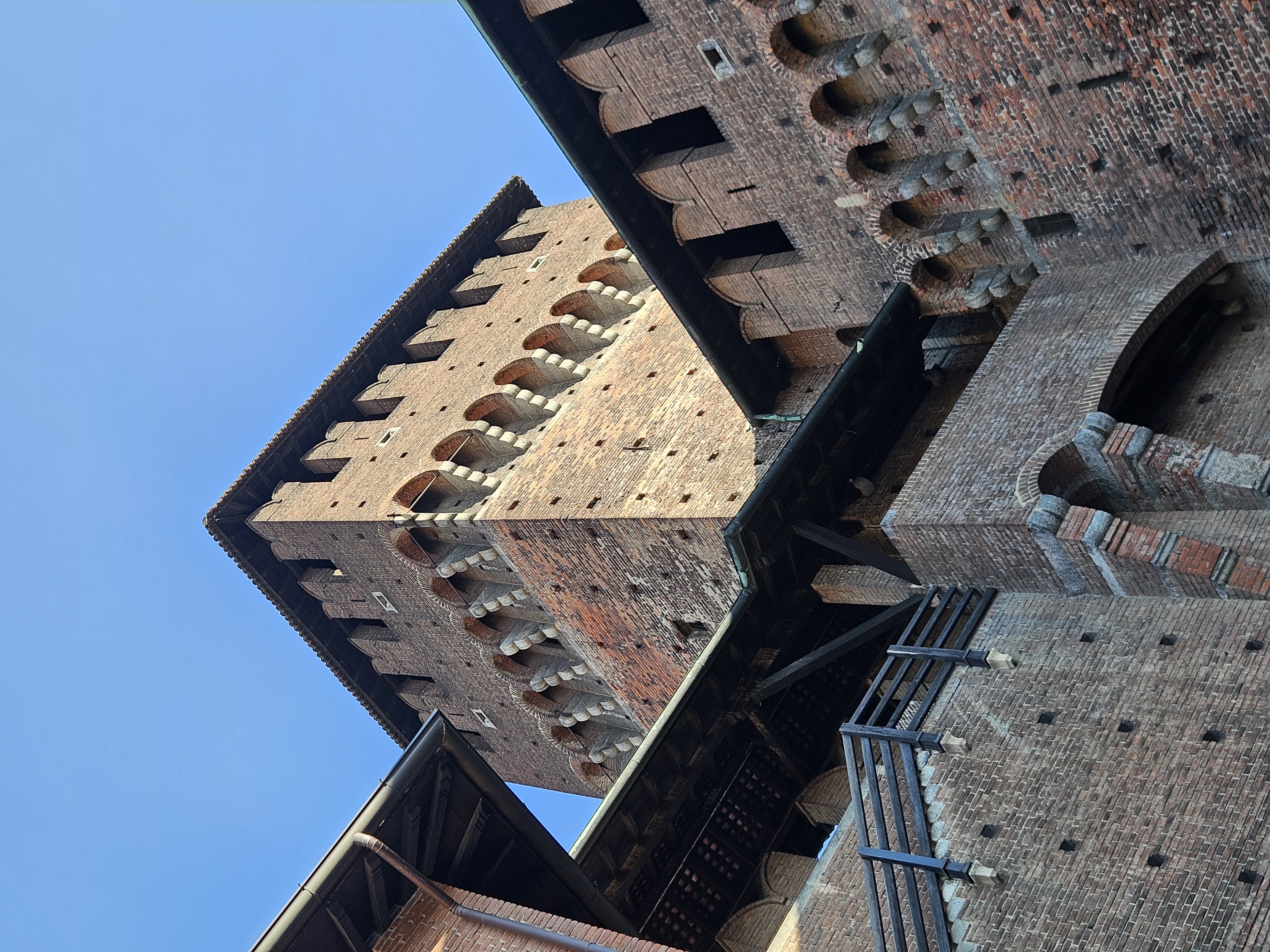
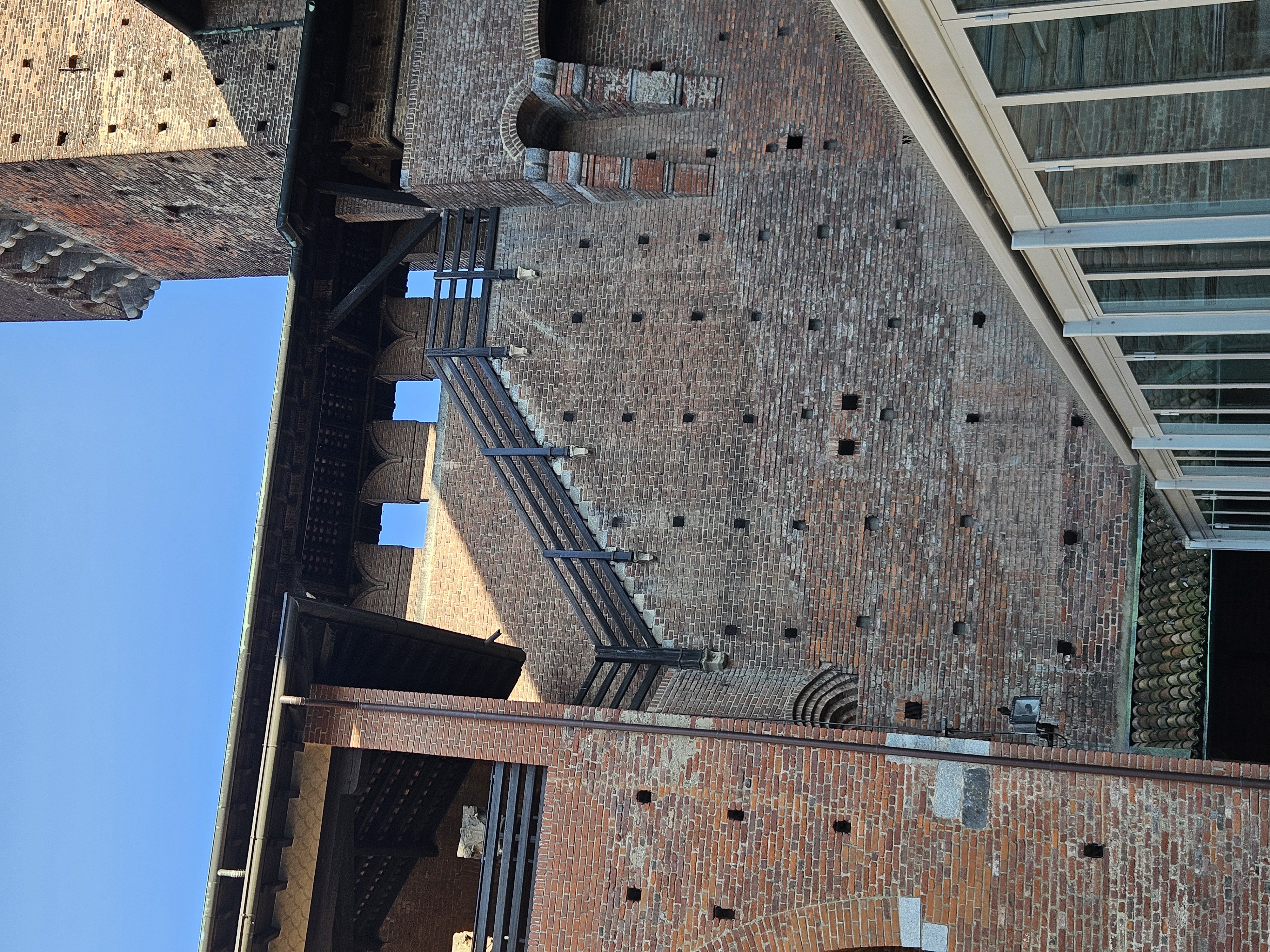

## Rocchetta today
Today, Rocchetta is an important cultural space within the Sforza fortress. After renovation during the 20th century, the Rochette area became home to several museums and cultural institutions, among which the Museum of Antiquities (Museo d'Arte Antica) stands out, which exhibits a rich collection of sculptures, tapestries and other works of art, related to various historical periods.
Rochetta also houses the Furniture Museum and the Weapons Museum. These museums contain collections that illustrate the development of military technologies and everyday life throughout history. In addition, Rocchetta itself is a popular place for organizing exhibitions and cultural events, which greatly contribute to the cultural dynamics of Milan.
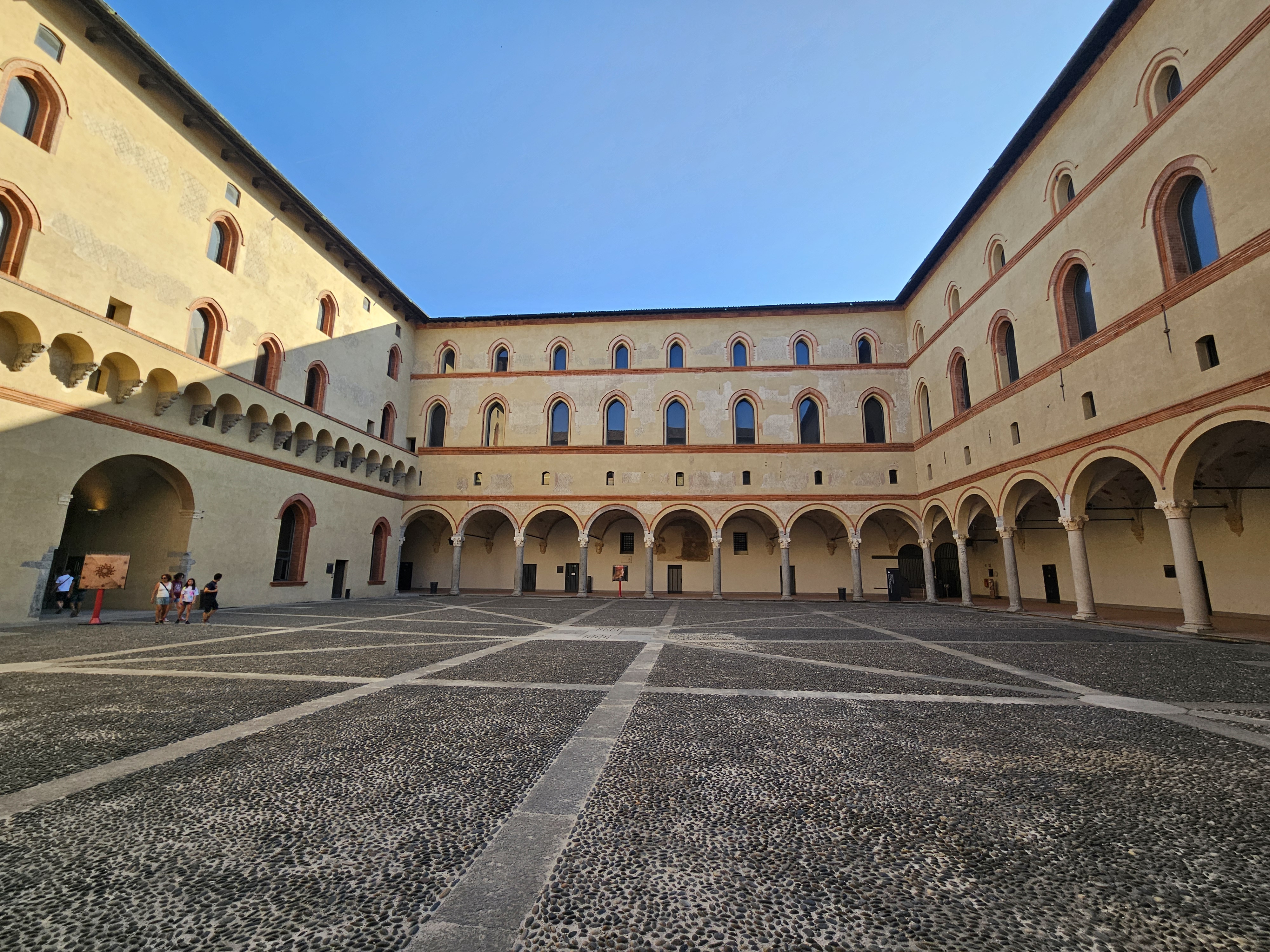
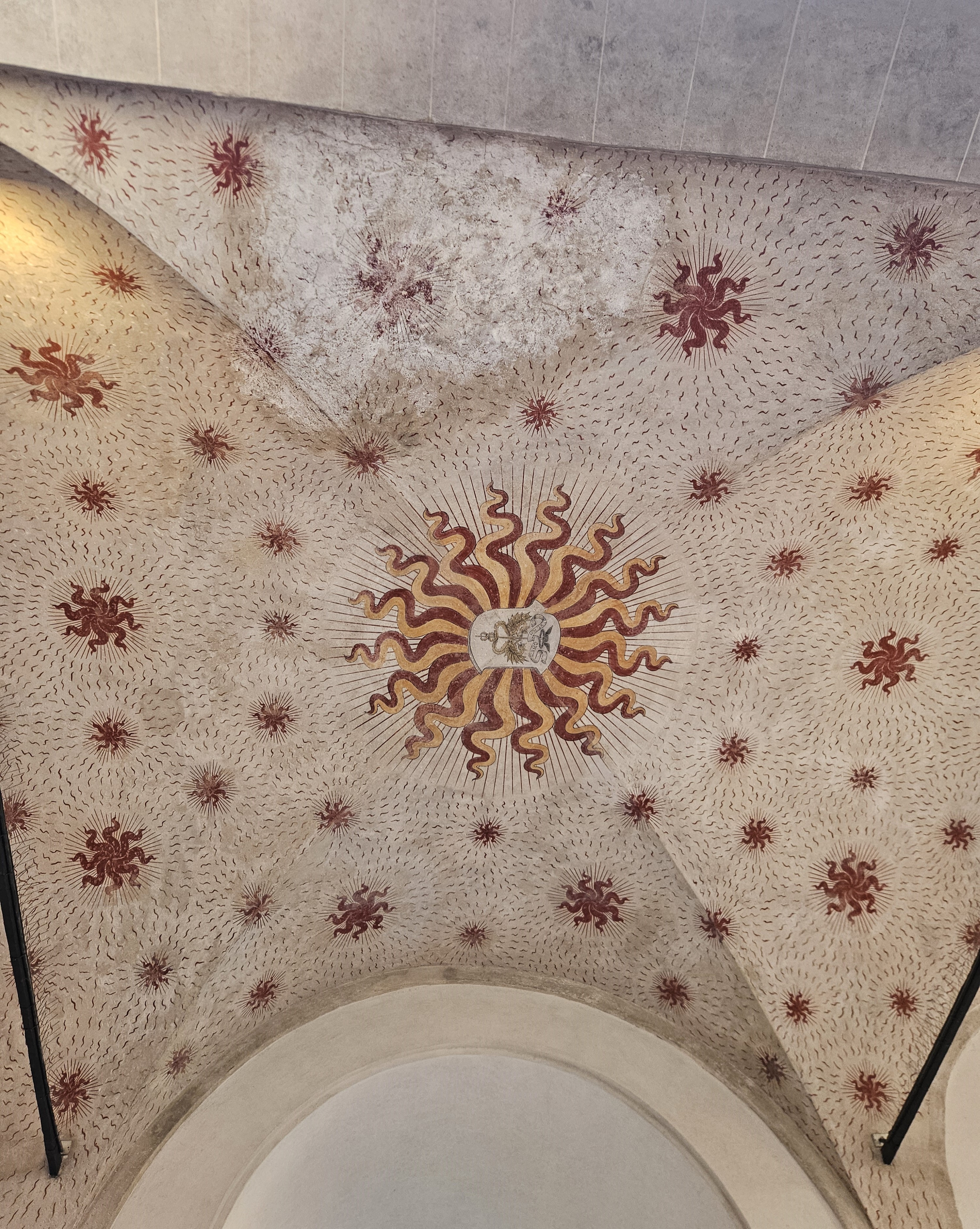
Rocchetta is a key element in understanding the functionality of the entire Sforza fortress. While the outer walls and towers represented a military defence against external threats, Rocchetta was the heart of the fortress, a safe haven for the Sforza family, the leadership and the most important people in the most dangerous moments. Inside it, the rulers could control the entire complex, and its position allowed for complete protection.
In today's context, Rocchetta allows us to understand more about daily life in medieval and Renaissance castles, as well as the military strategy and innovations of the era. Its architecture is not only practical, but also aesthetically impressive, with an elegant design that fits harmoniously into the overall appearance of the Sforza fortress.
20250622_185857.jpg (https://images.hive.blog/DQmeU1NtCEGPaetrHuMSfxNDysZ8h9z6w2gQh3JYJeava4n/20250622_185857.jpg)
Furthermore, the unique architecture of Rocchetta and its history attract visitors and history lovers, because Rocchetta is not only a military fortress, but also a place that tells the story of the architectural genius of Renaissance Italy. From the large defensive constructions to its present-day function as a cultural space, Rocchetta is a true example of how historical heritage can live in modern society.
20250622_190005.jpg (https://images.hive.blog/DQmbgSx789awQaXKNzhUjyiqW6YDQhaQmCpXvmLwG6ut12c/20250622_190005.jpg)
20250622_190038.jpg (https://images.hive.blog/DQmajmGpCAUs77cNsAqea2v7mpMG7gXTRKpWuSEzVbLPDz6/20250622_190038.jpg)
20250622_190144.jpg (https://images.hive.blog/DQmV1iBXLrTo9aeBPGVarLzJ65N6iiZZ1yX2ExuTZYoUDby/20250622_190144.jpg)
20250622_190250.jpg (https://images.hive.blog/DQmd5bpGzrbNhNNds8rzscGuUt2SaPaCPpUTEfunea4ZcjR/20250622_190250.jpg)
20250622_190243.jpg (https://images.hive.blog/DQmPh45r63Vu5qeacKd3yYPx2M9nMDyhBpArkmHWgENqhq2/20250622_190243.jpg)
20250622_190301.jpg (https://images.hive.blog/DQmaGTP2q5ifvqGWYxJ6w4S8wKp4RMPzANAaYCGdfrKtgVG/20250622_190301.jpg)
20250622_190305.jpg (https://images.hive.blog/DQmcbMzyPVWibnb9tT5UTCiRyCqEEKQRMeaonnNZF6F5yKD/20250622_190305.jpg)
20250622_190311.jpg (https://images.hive.blog/DQmVztnHorMgGZue6cQEVxYVjMf2snNECfNrs7juNrtPjps/20250622_190311.jpg)
20250622_190308.jpg (https://images.hive.blog/DQmZzon8hBKy7b3HGJunHH2oZ5ePEva5p2bGEE7kf4Ucg9e/20250622_190308.jpg)
20250622_190430.jpg (https://images.hive.blog/DQmSrMV8GSkEd5YSo4BLN4qnv7uFR8MtCUXL5rS6jE9znA4/20250622_190430.jpg)
Today, the Sforza fortress is not only a monument to past rulers, but also a place where past and present, military history and cultural heritage intertwine. Passing through its courtyard, one can feel the spirit of the past, but also notice how Milan, the city of modern fashion and design, can combine the past and the future in one unique space.
In the fortress, you can feel the peace and grandeur of that space, viewing the art collections or just enjoying the park around it. The Sforza fortress is a true indicator of strength, but also of beauty, built by generations of artists, leaders and ordinary people, creating one of the most important cultural centers in Italy.
20250622_190435.jpg (https://images.hive.blog/DQmb7if6uBHHEatXcZtDraPNMW5L5uKNbrWJXYxjeeNqmdH/20250622_190435.jpg)
YpihifdXP4WNbGMdjw7e3DuhJWBvCw4SfuLZsrnJYHEpsqZFkiGGNCQCEHAD6Vp3osEkdojpvPcCq6h1xChwiQTuAzmrXiW4BRc91hHiJ3TeUe5LsGQHGAJgvG2fPoRBPriJrJGp6uBcnFGTZ66YNfte9ocbR2P2U37R5mQnLxxE.png (https://images.hive.blog/DQmRF1upUyQd15CRApcgHKoTmgCDGtN9KpxUvckxLNL7eav/YpihifdXP4WNbGMdjw7e3DuhJWBvCw4SfuLZsrnJYHEpsqZFkiGGNCQCEHAD6Vp3osEkdojpvPcCq6h1xChwiQTuAzmrXiW4BRc91hHiJ3TeUe5LsGQHGAJgvG2fPoRBPriJrJGp6uBcnFGTZ66YNfte9ocbR2P2U37R5mQnLxxE.png)
20250622_185251.jpg (https://images.hive.blog/DQmSHnsDHf5rA43cza8XyMbigQPFJ4kWqTvYcqPXBxvKze2/20250622_185251.jpg)
This is the photo I liked the most. All photos were taken with my phone, a Samsung S23.
[source](https://balkanfun.travel/blog/zamak-sforca-u-milanu-bajkovito-utvrdenje-u-prestonici-mode)
[source](https://www.comune.milano.it/en/)
[//]:# (!pinmapple 45.47013 lat 9.17973 long d3scr)
[//]:# (!worldmappin 45.47017 lat 9.17964 long d3scr)
YpihifdXP4WNbGMdjw7e3DuhJWBvCw4SfuLZsrnJYHEpsqZFkiGGNCQCEHAD6Vp3osEkdojpvPcCq6h1xChwiQTuAzmrXiW4BRc91hHiJ3TeUe5LsGQHGAJgvG2fPoRBPriJrJGp6uBcnFGTZ66YNfte9ocbR2P2U37R5mQnLxxE.png (https://images.hive.blog/DQmRF1upUyQd15CRApcgHKoTmgCDGtN9KpxUvckxLNL7eav/YpihifdXP4WNbGMdjw7e3DuhJWBvCw4SfuLZsrnJYHEpsqZFkiGGNCQCEHAD6Vp3osEkdojpvPcCq6h1xChwiQTuAzmrXiW4BRc91hHiJ3TeUe5LsGQHGAJgvG2fPoRBPriJrJGp6uBcnFGTZ66YNfte9ocbR2P2U37R5mQnLxxE.png)
***I hope you enjoyed reading and looking at the photos. I enjoyed making this blog, I hope you did too. Until next time, "Regards!"***
